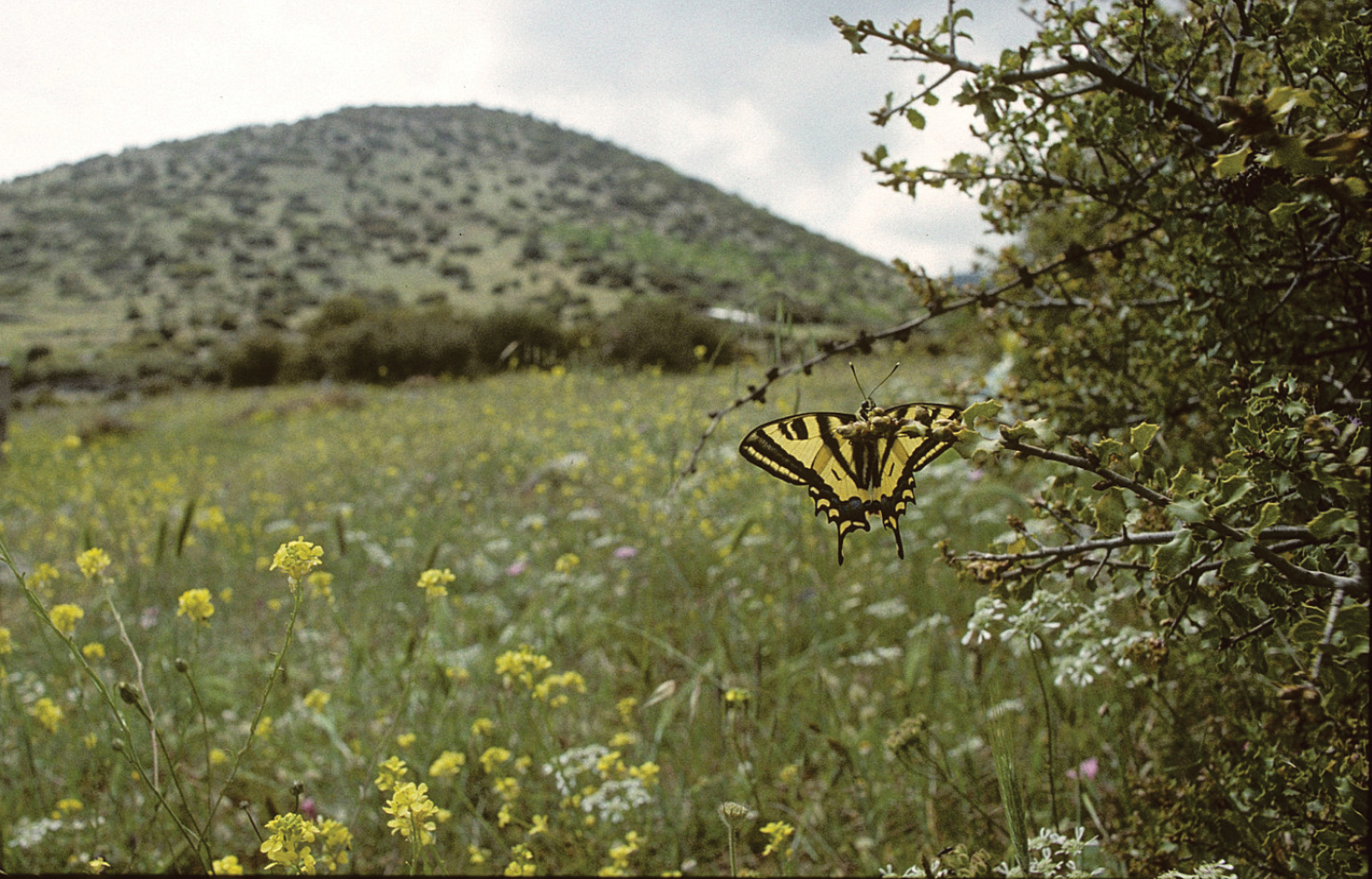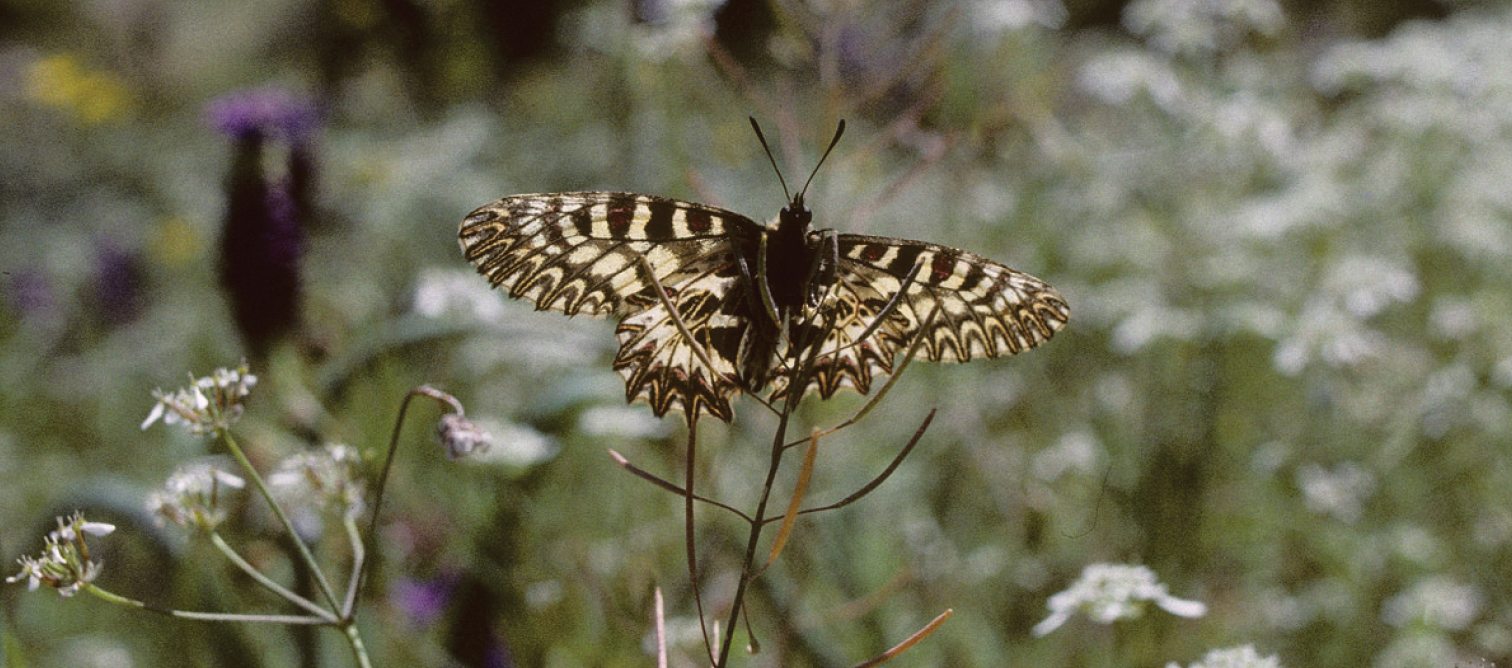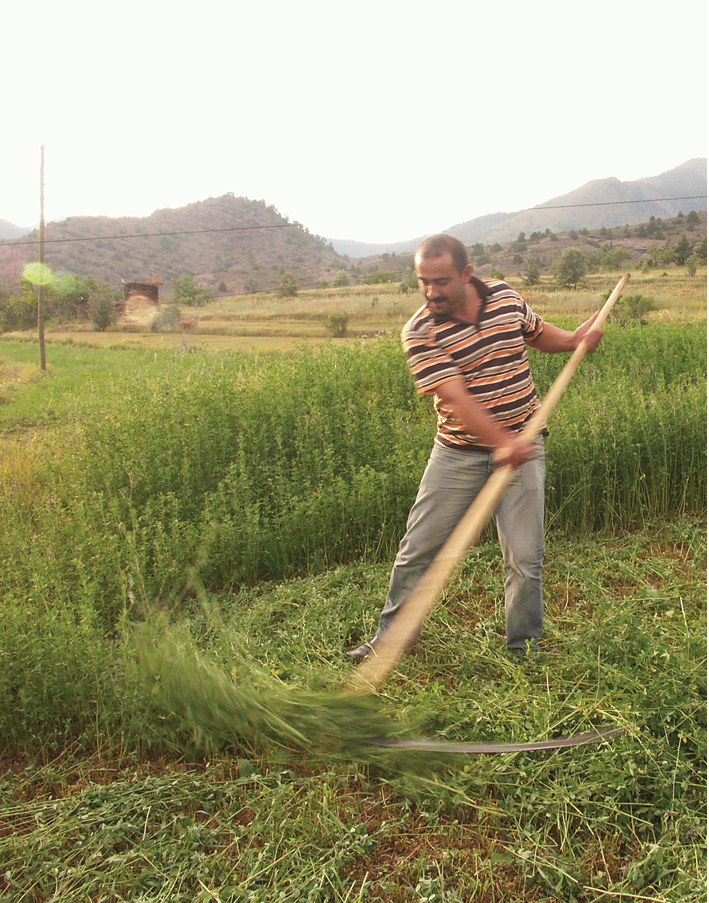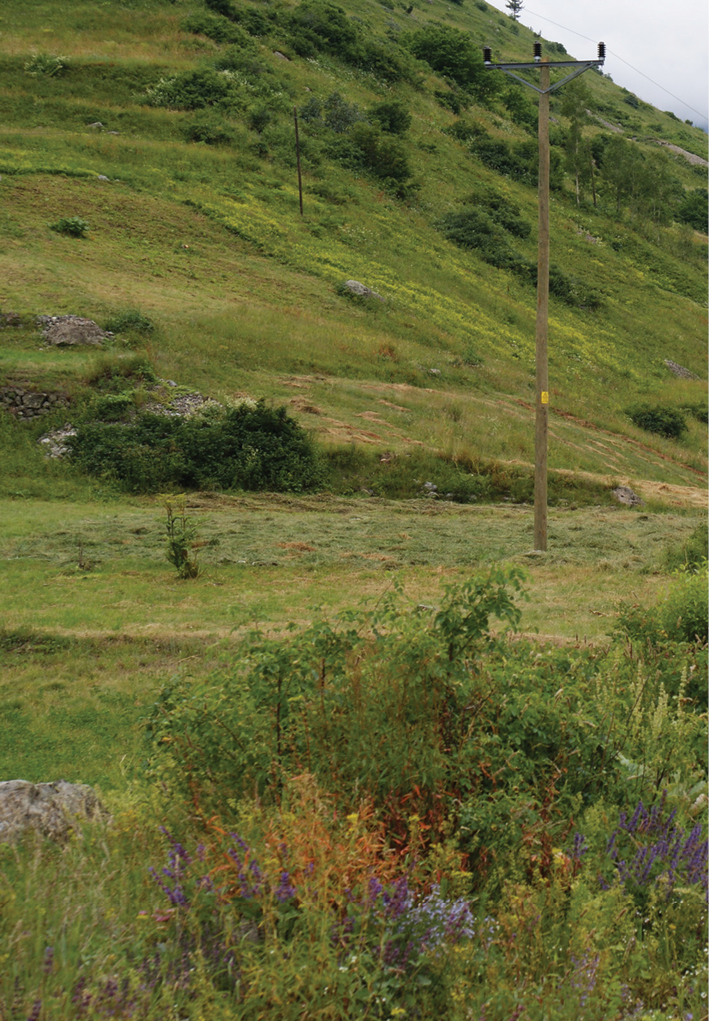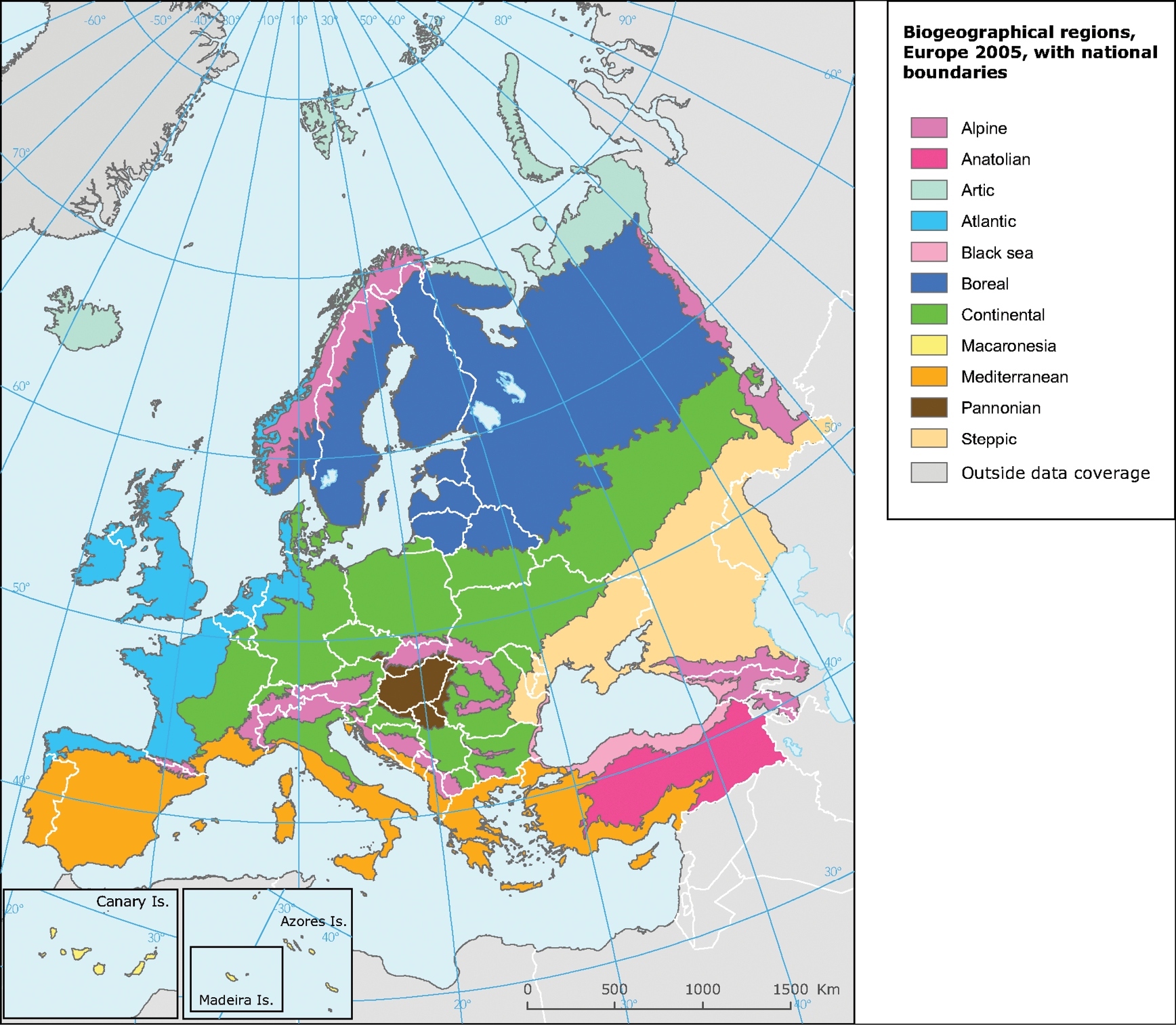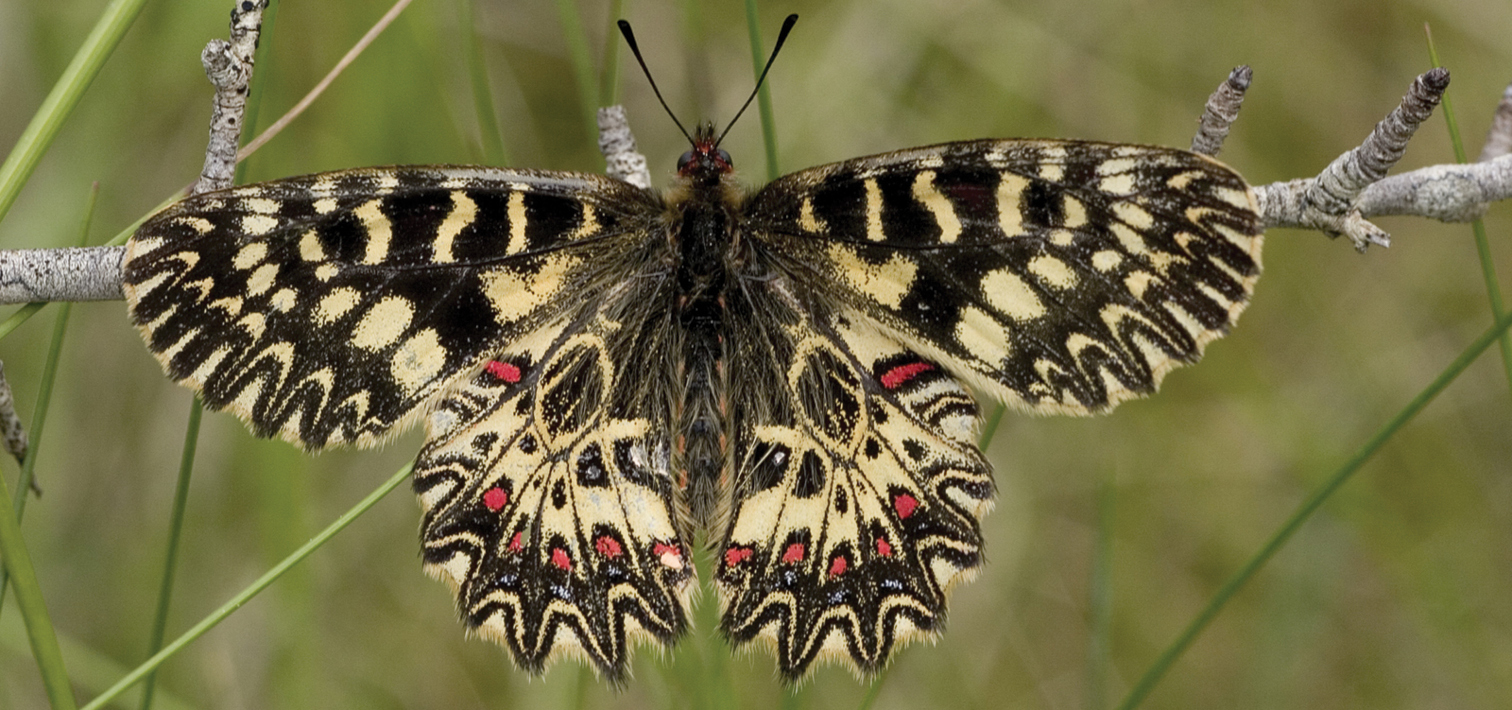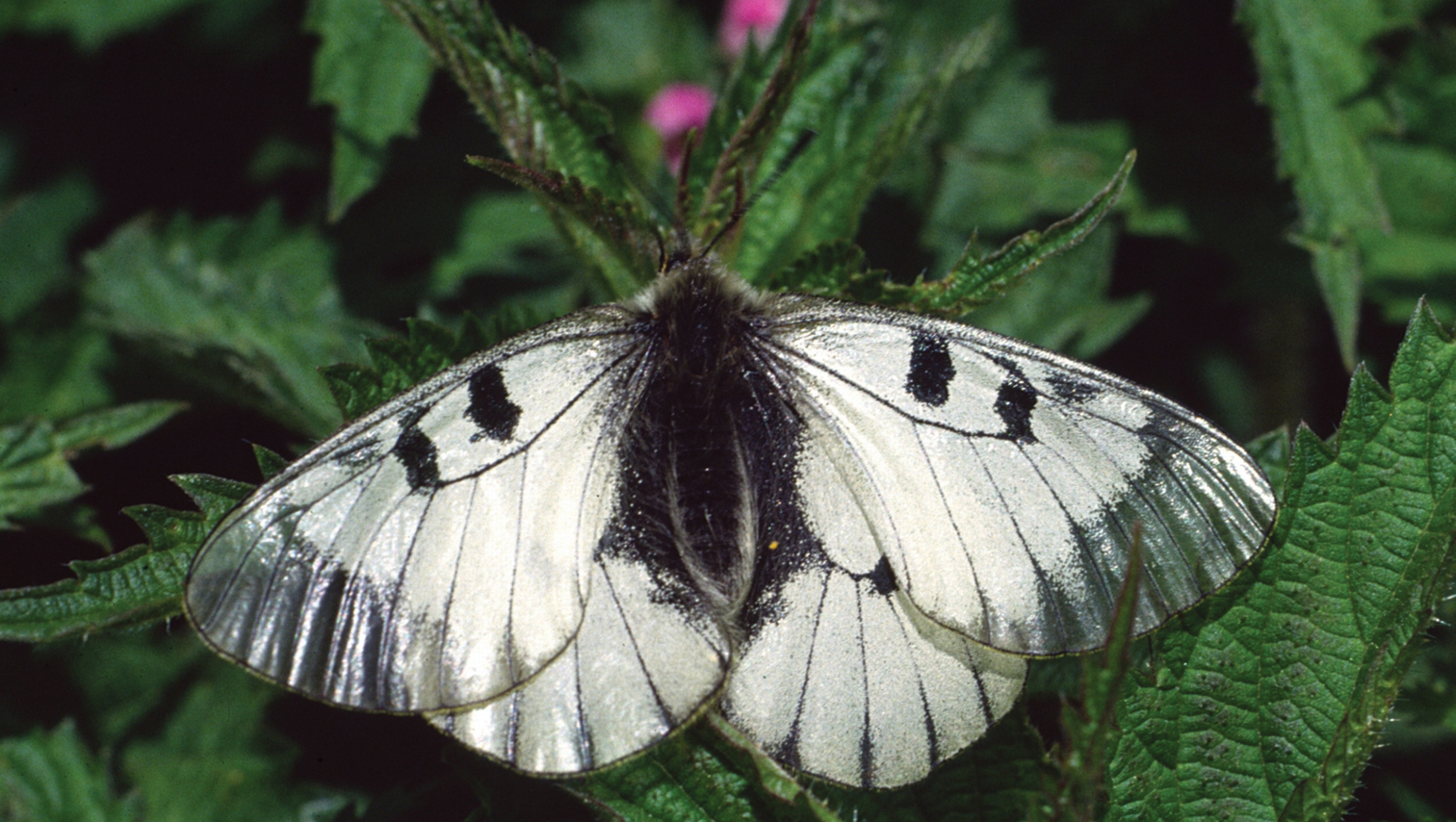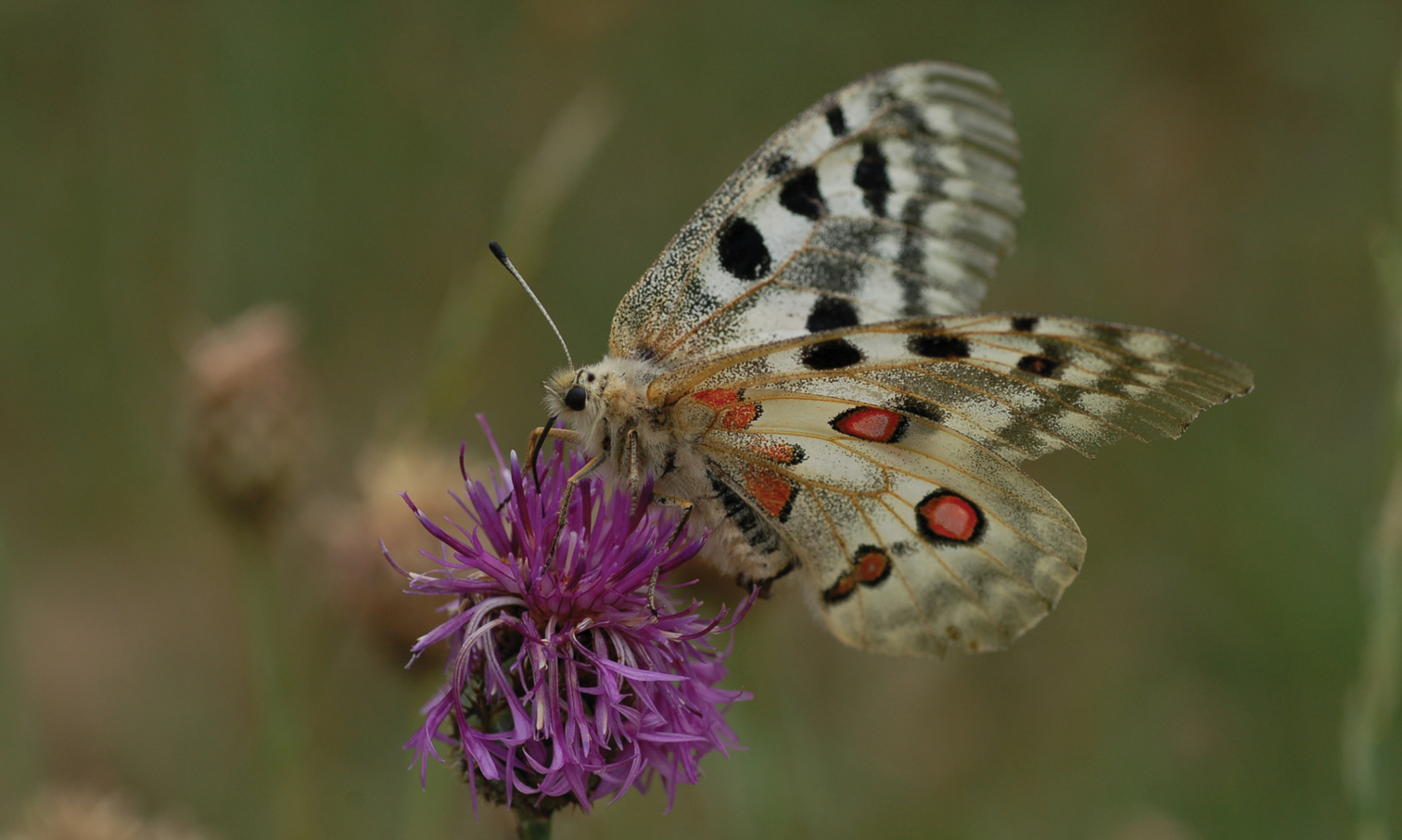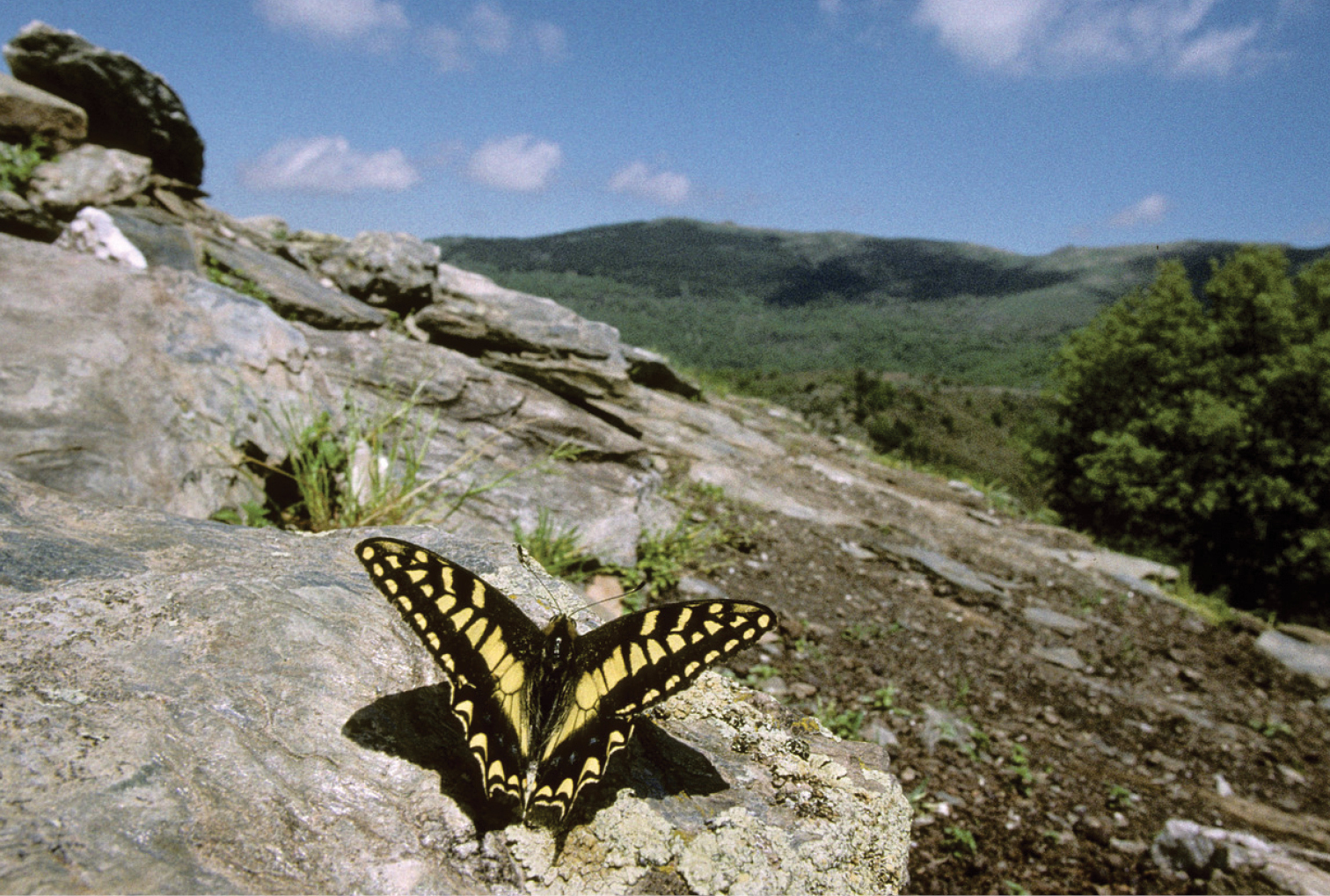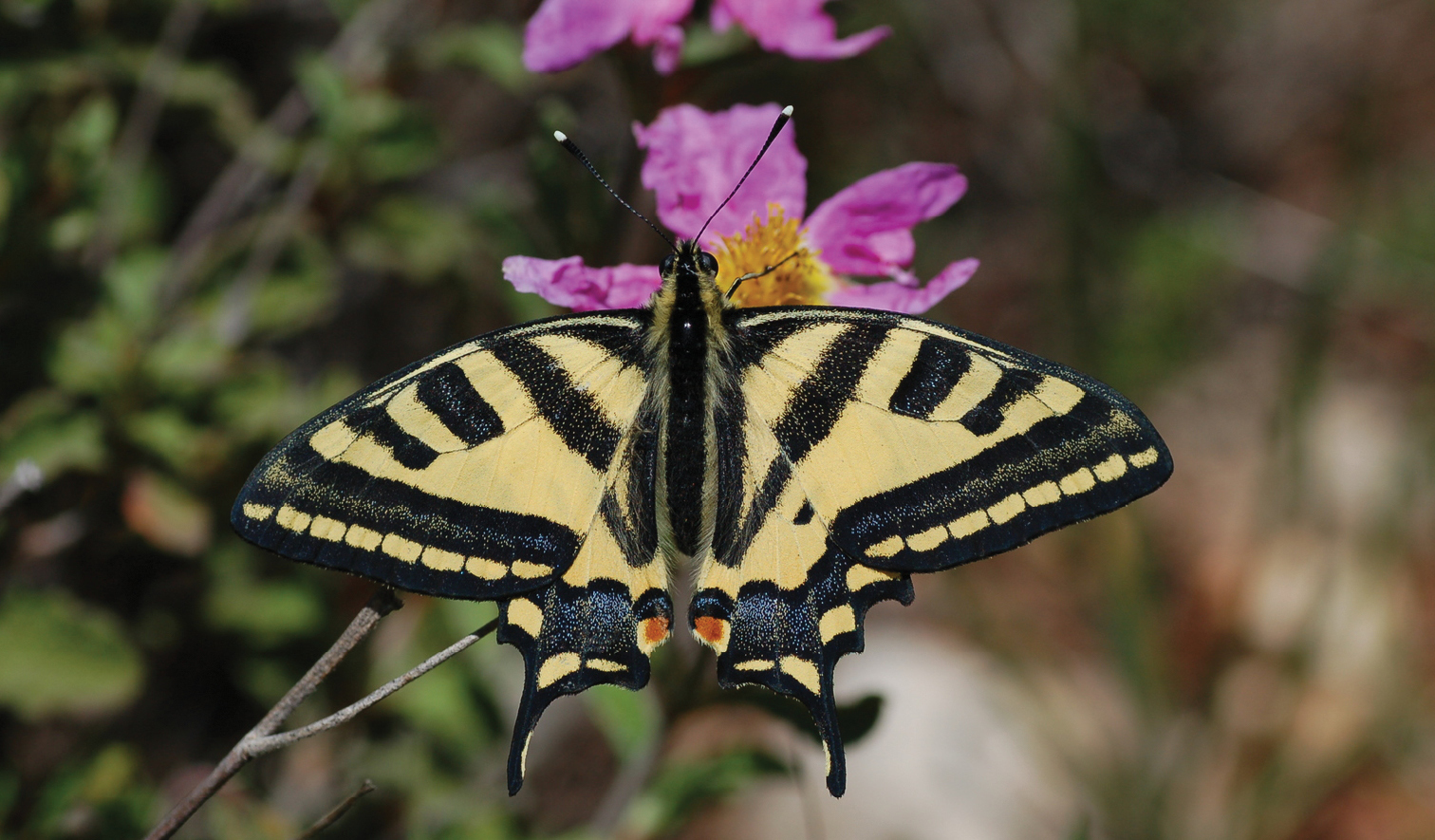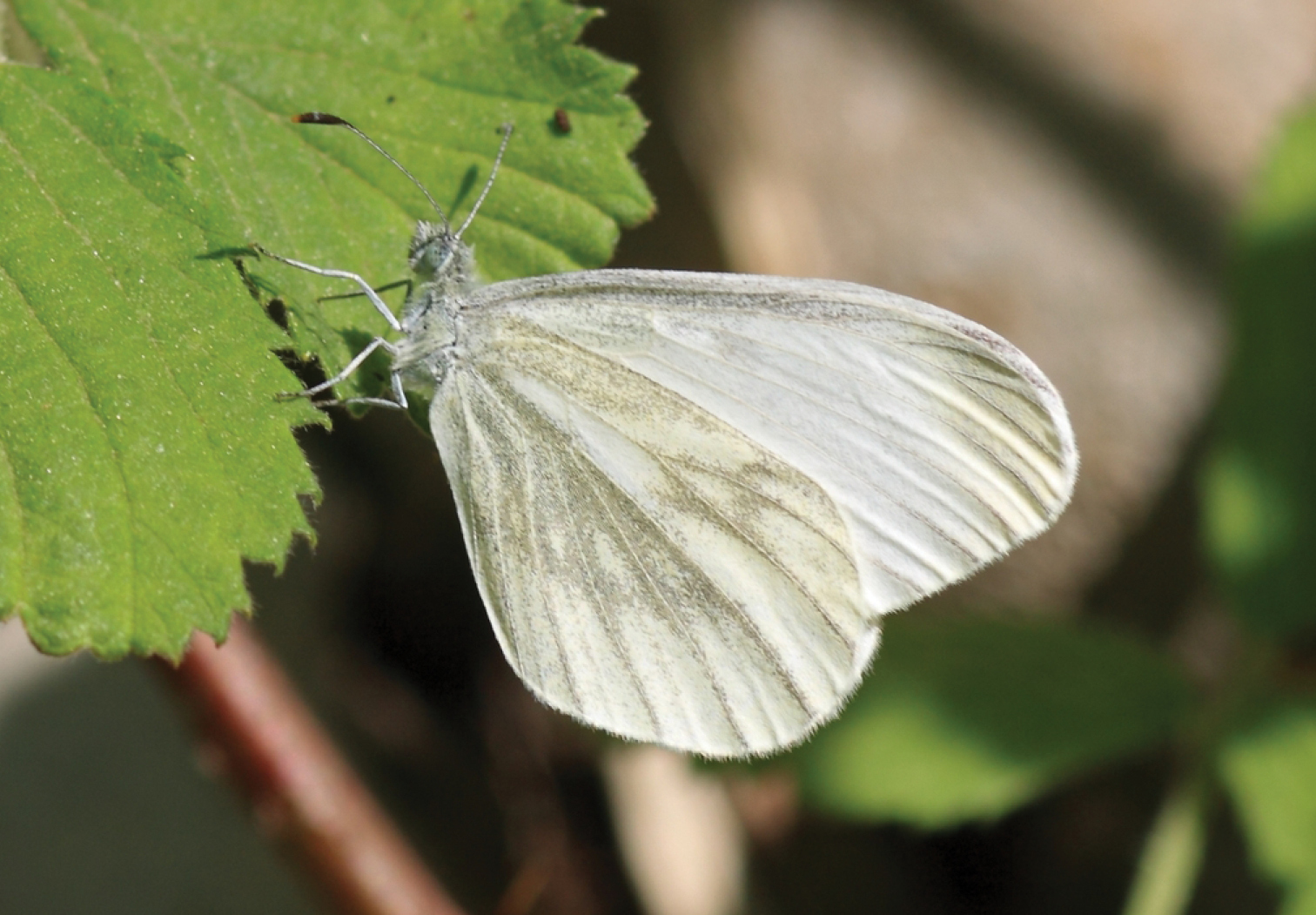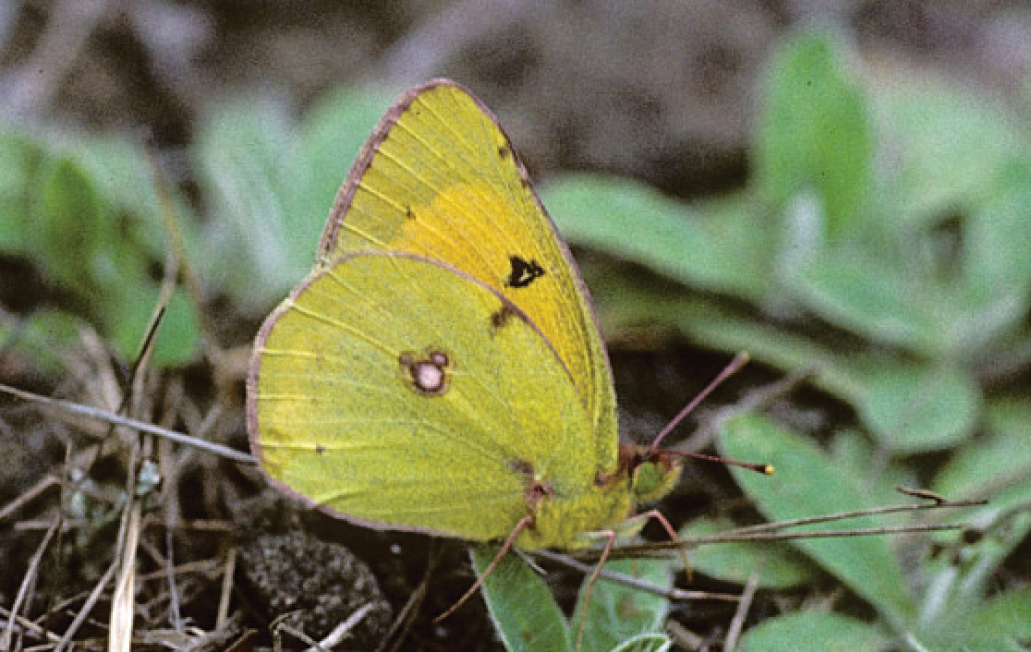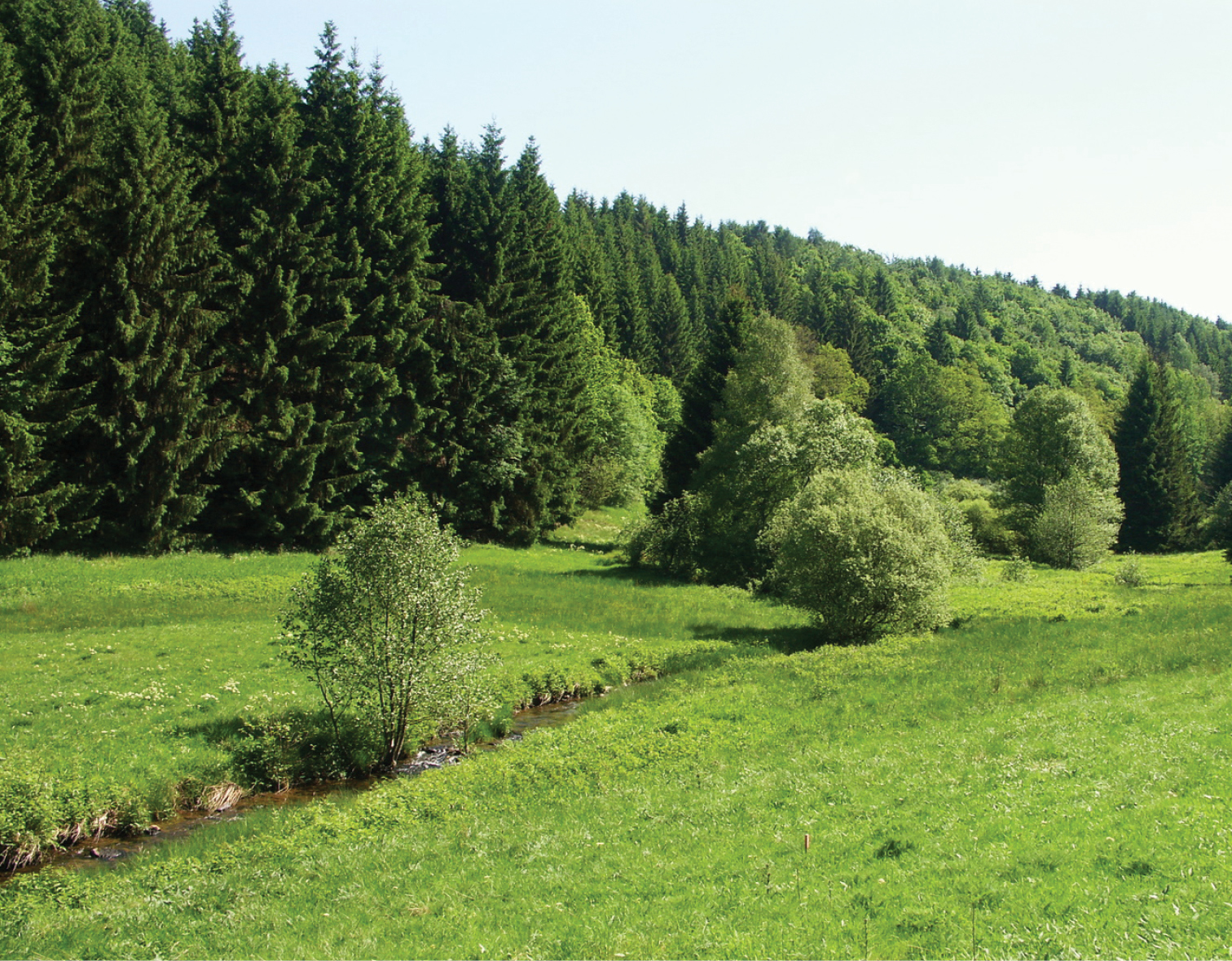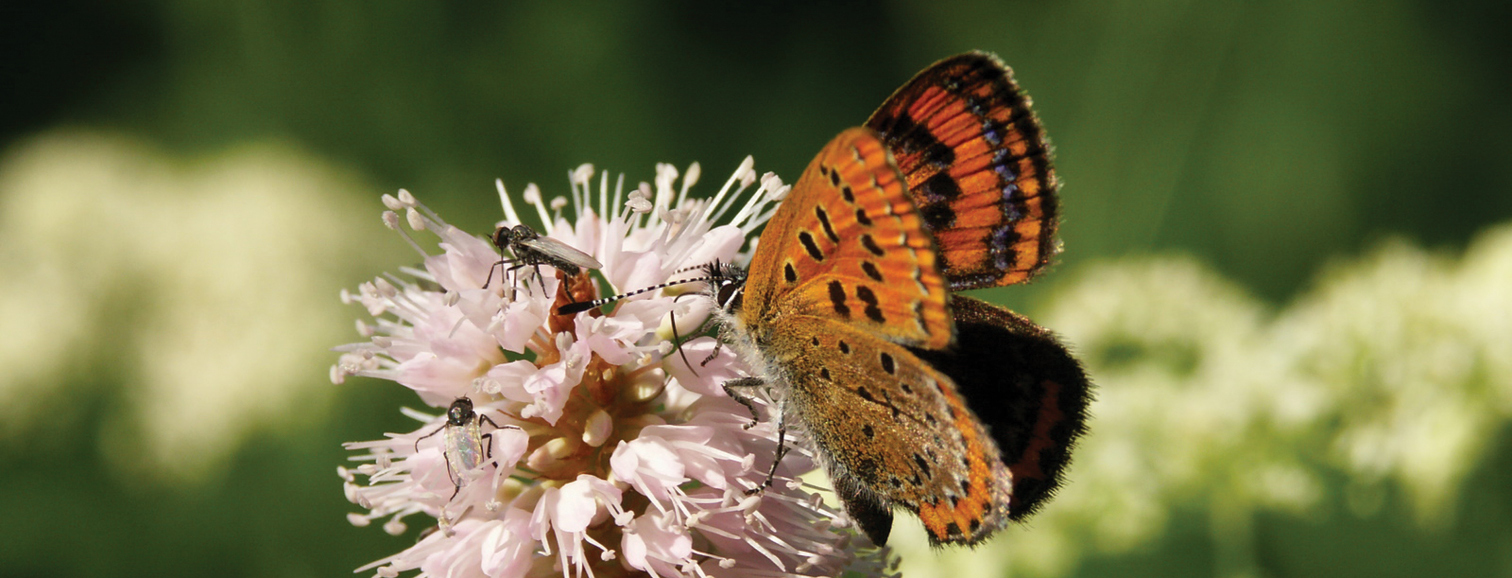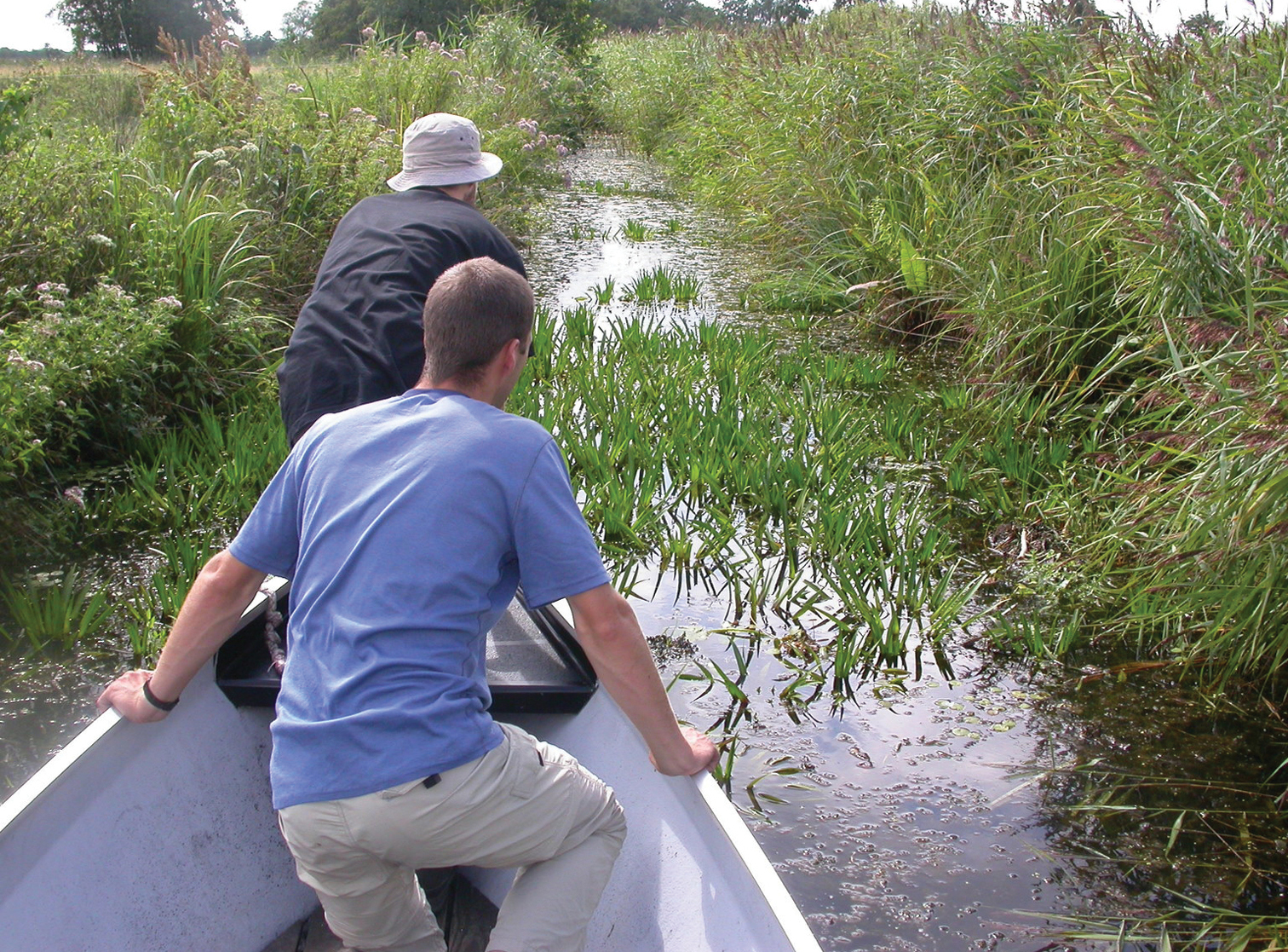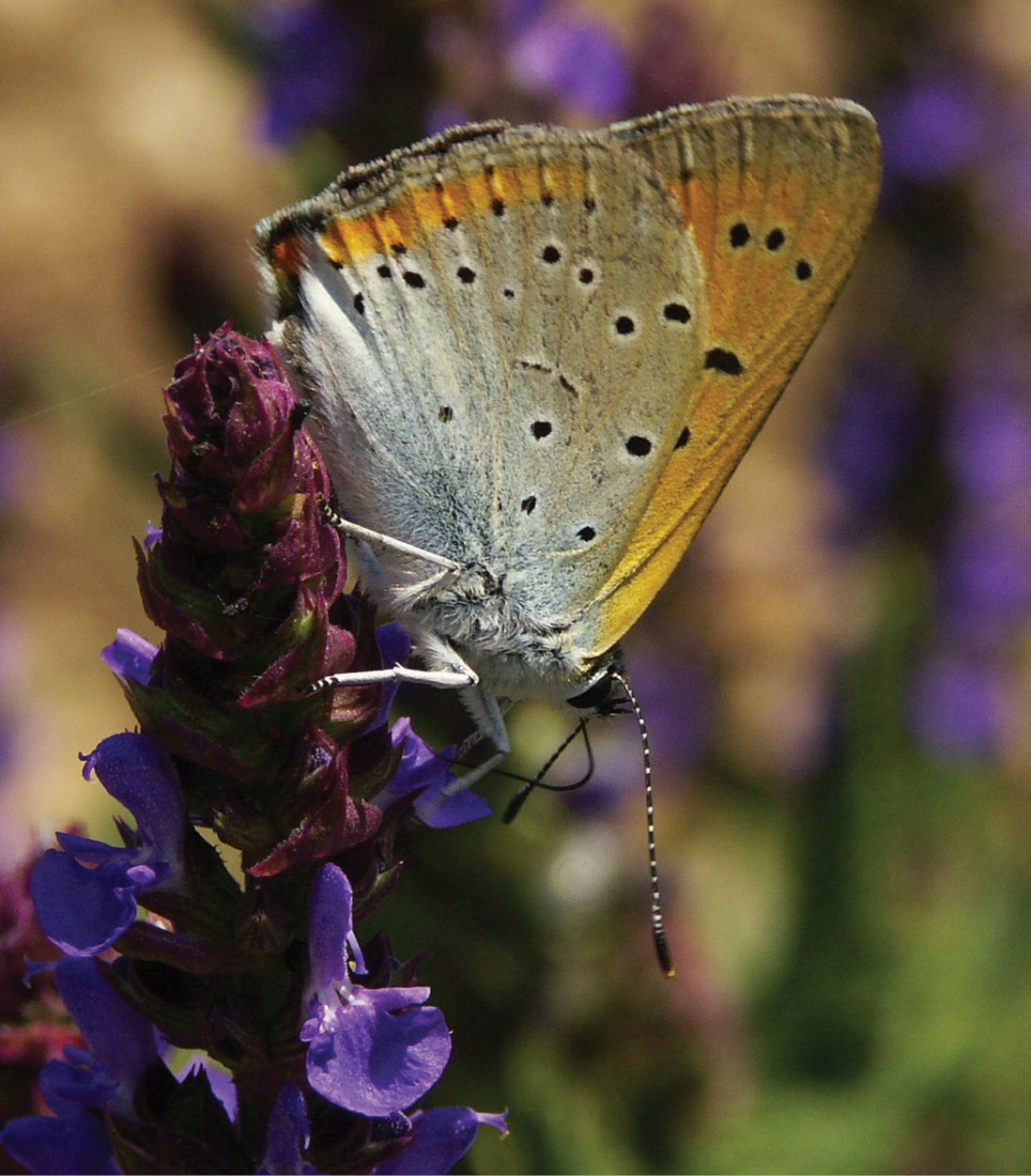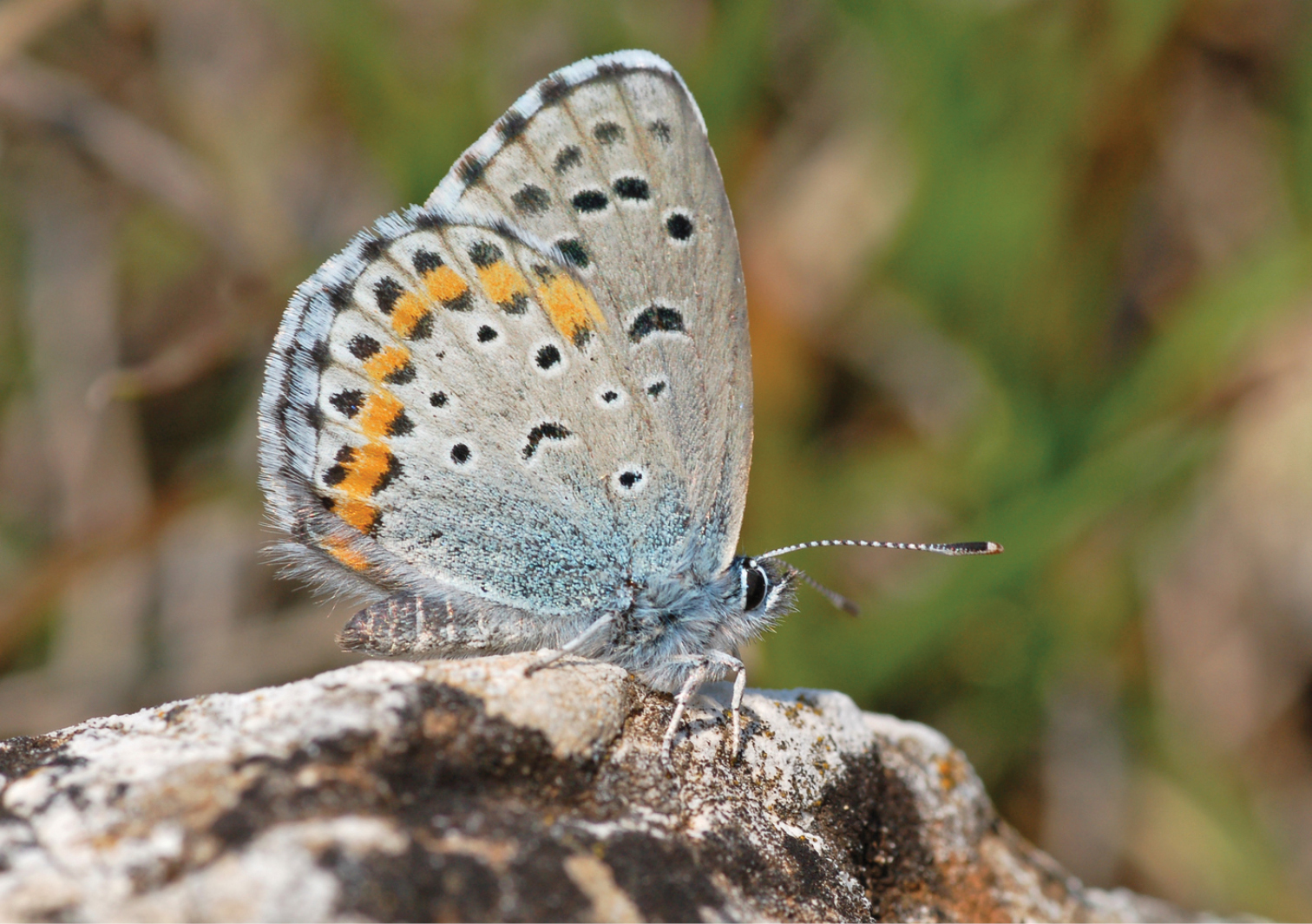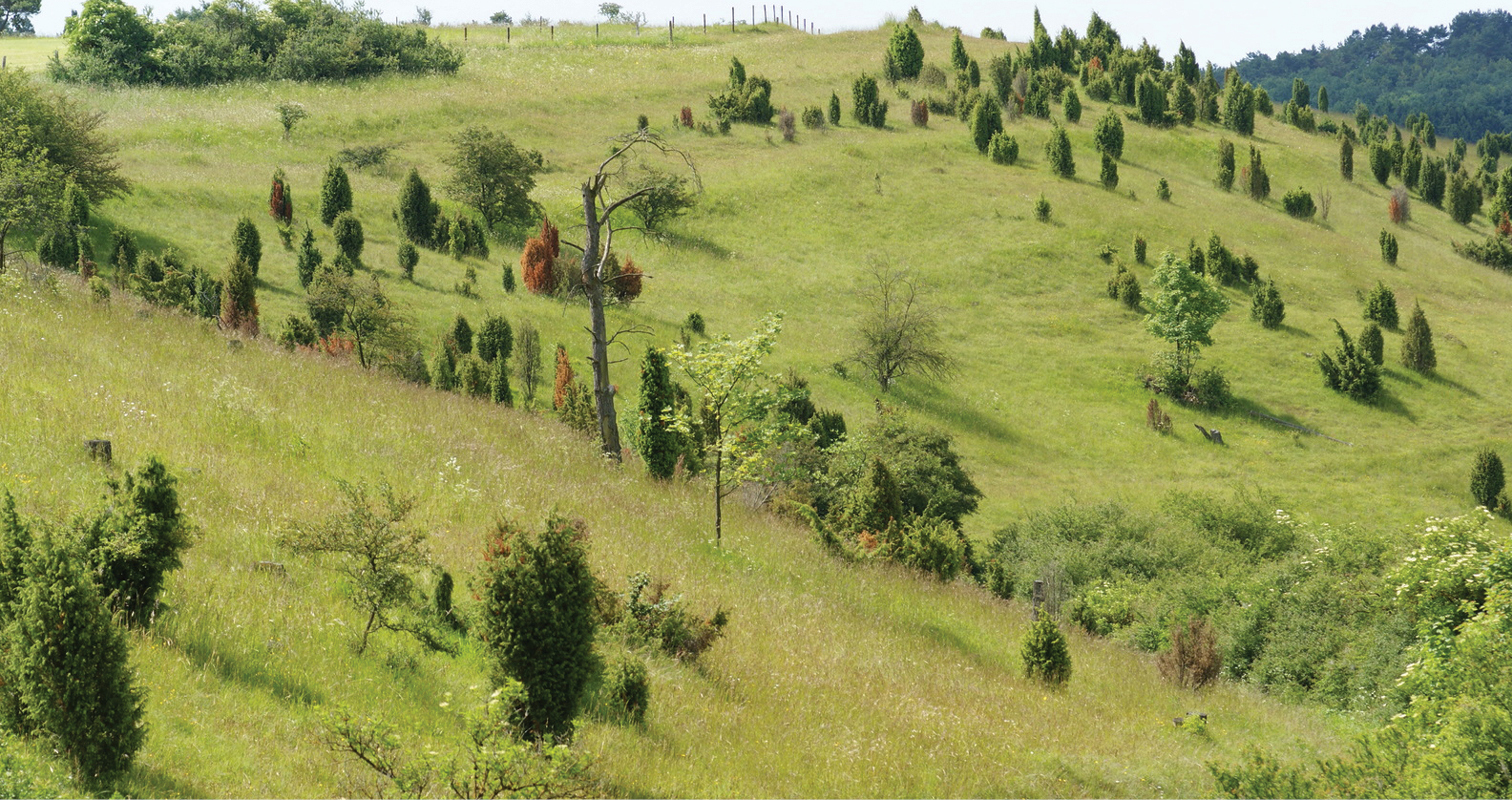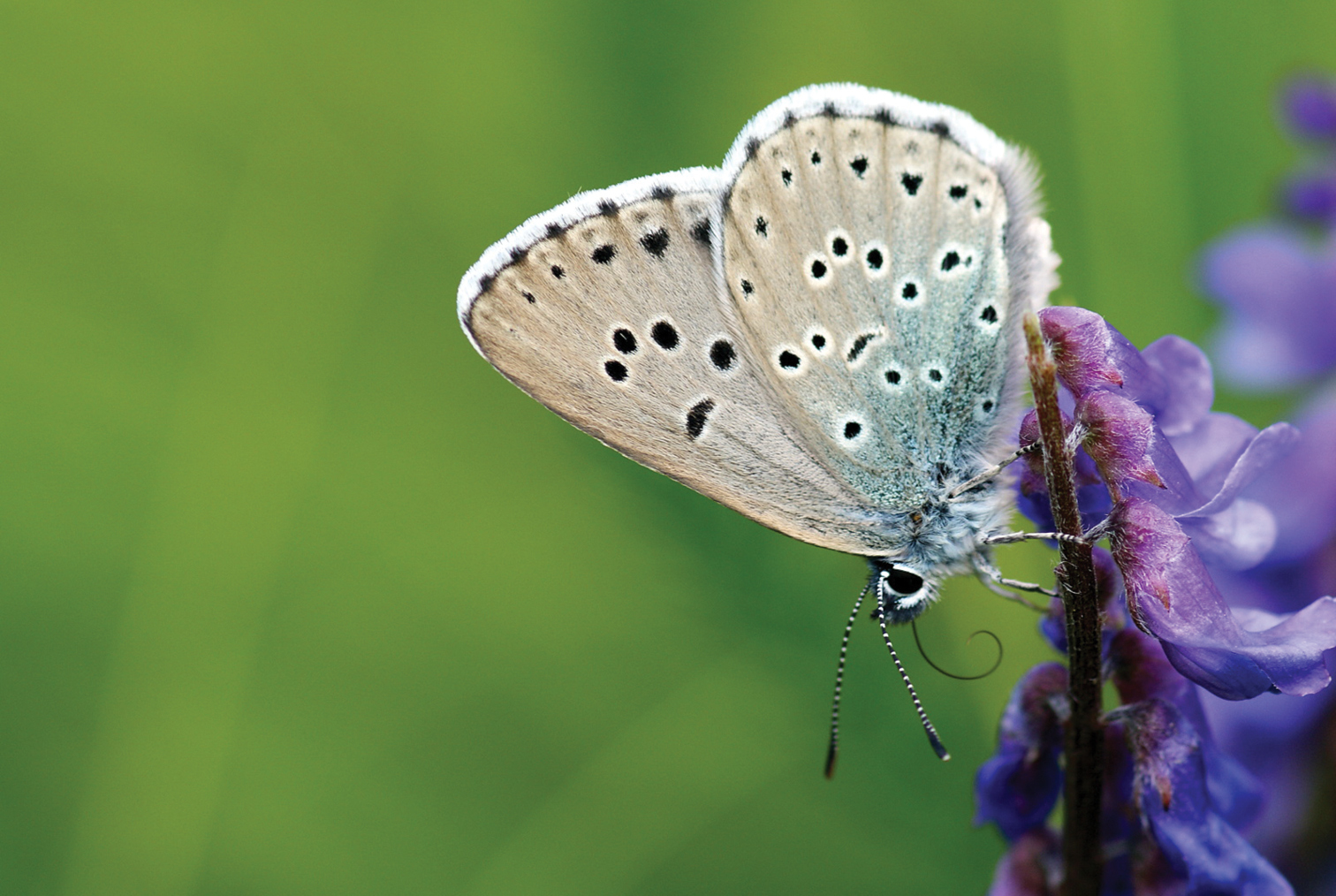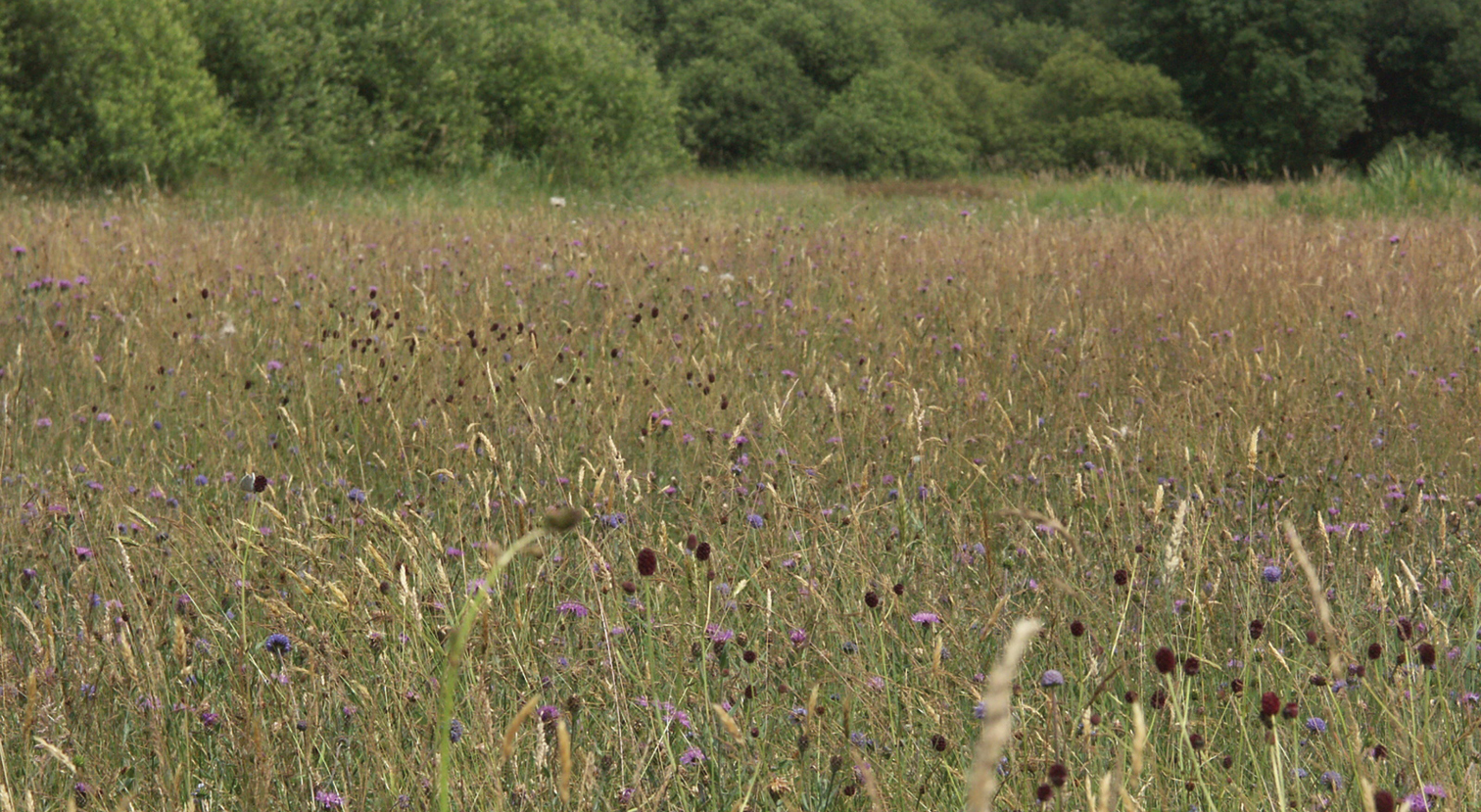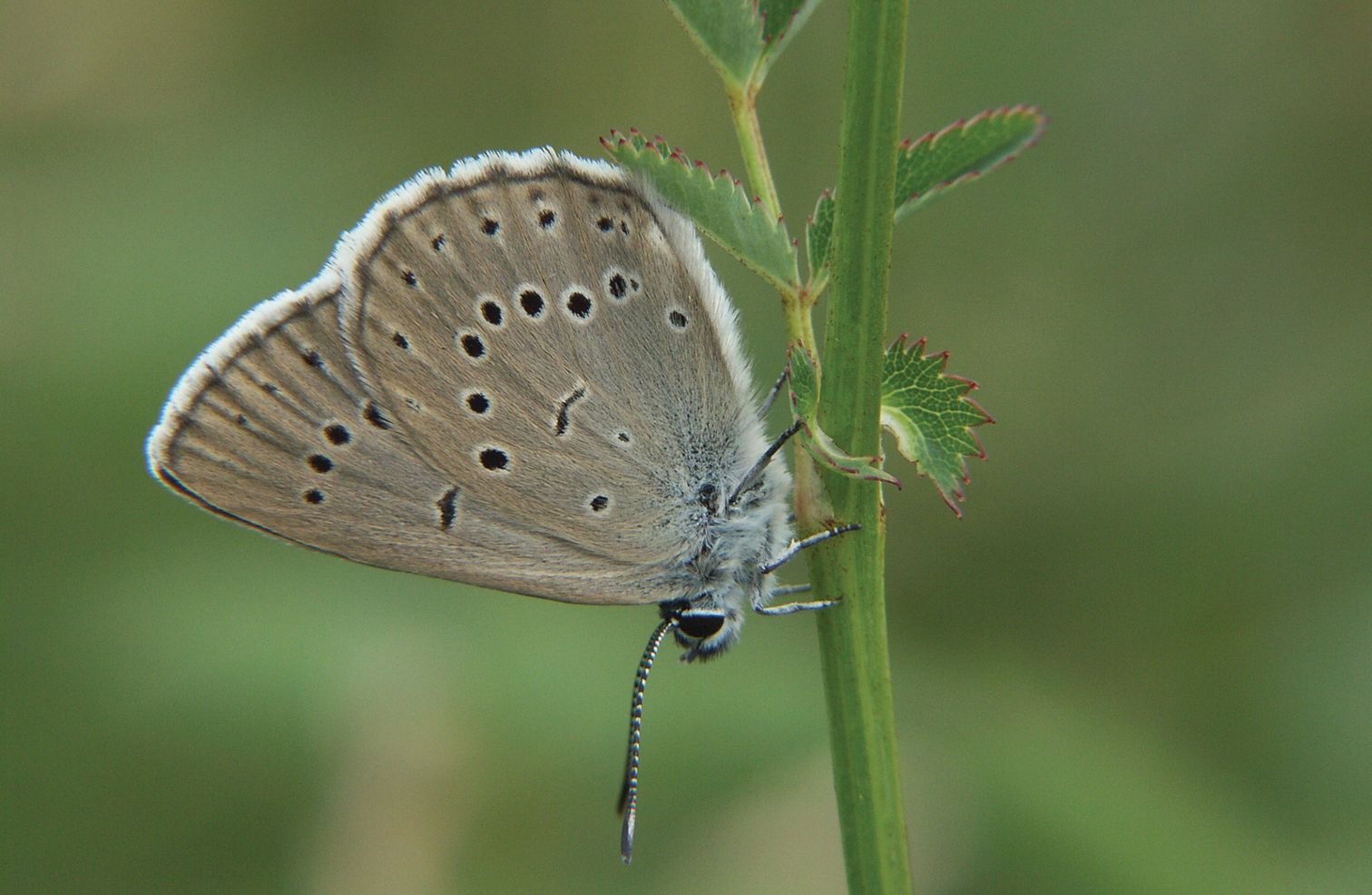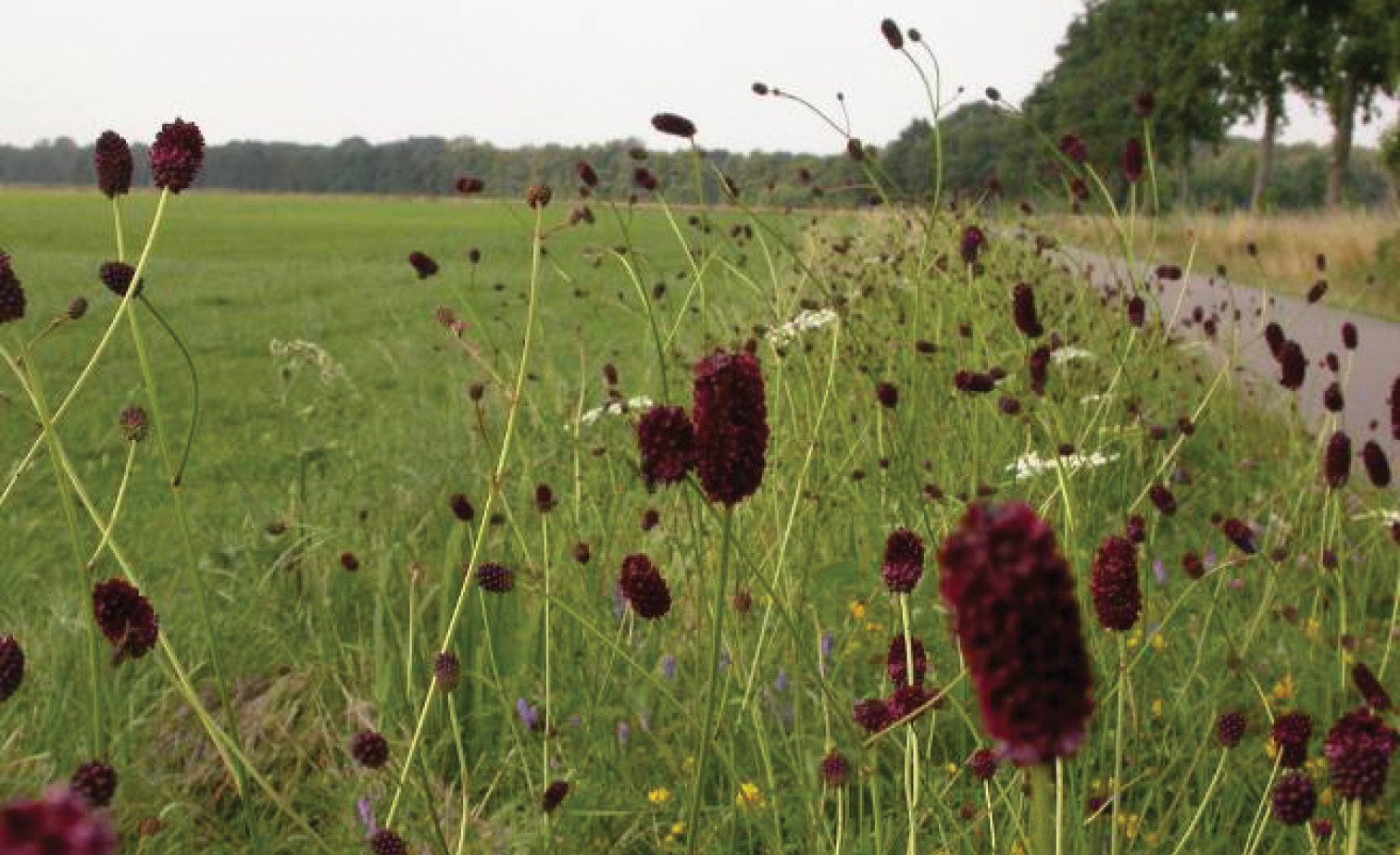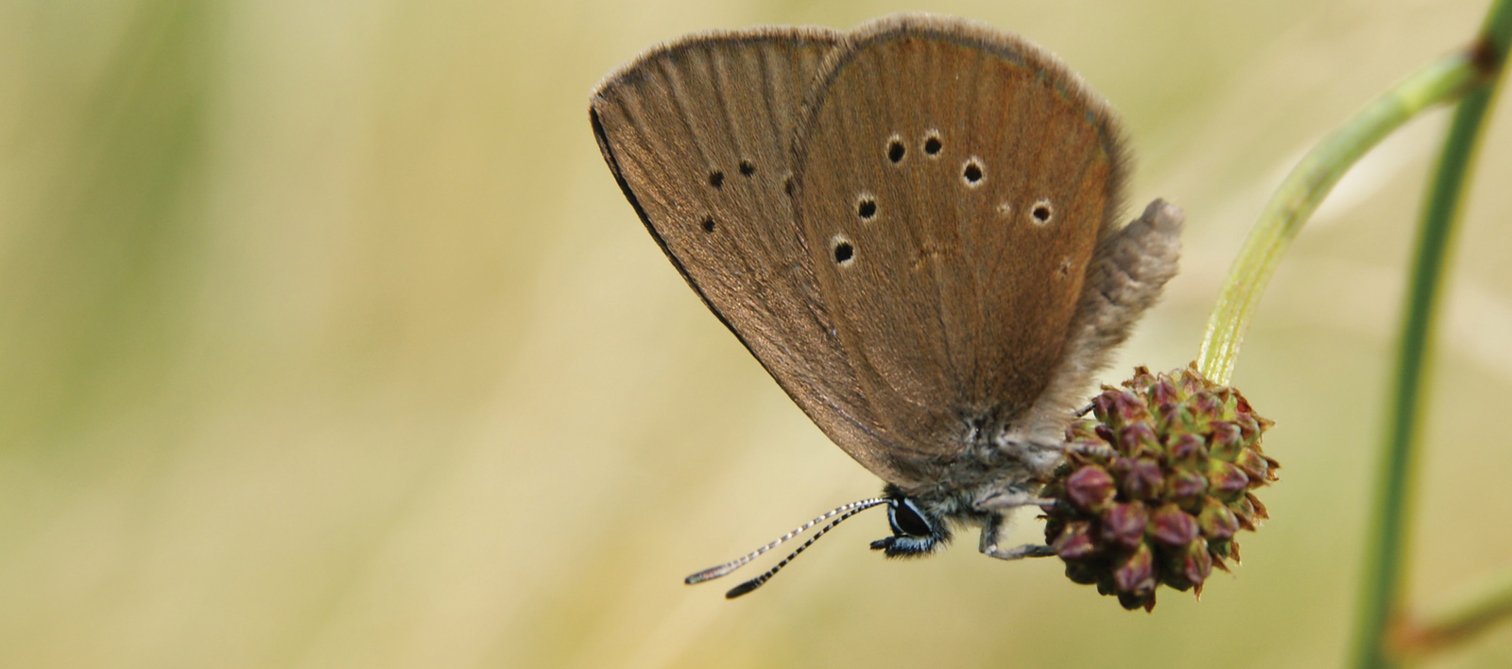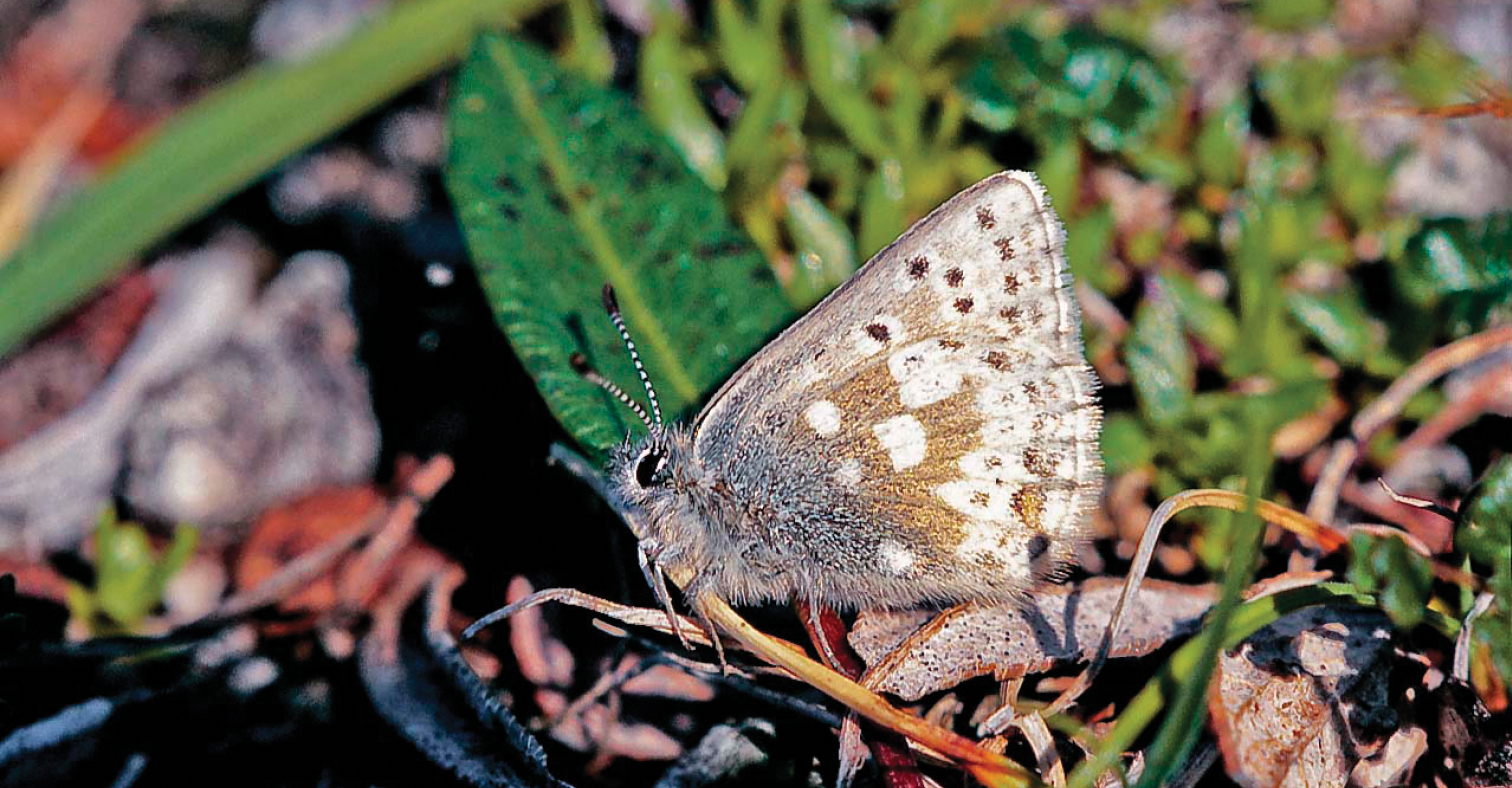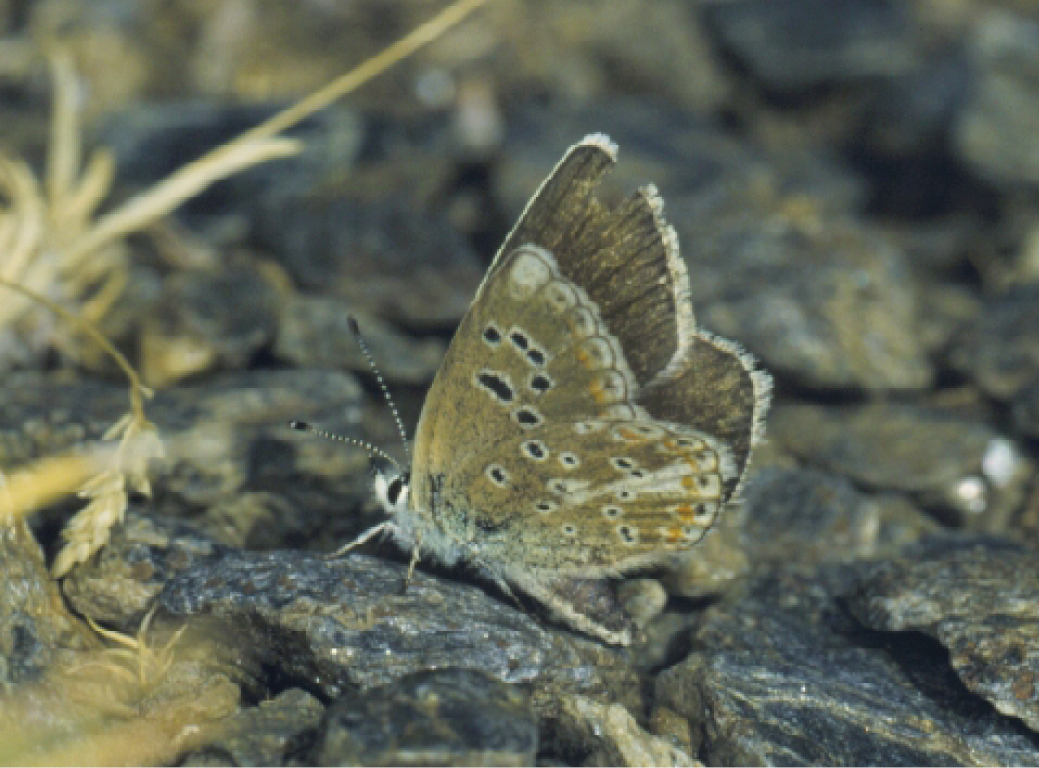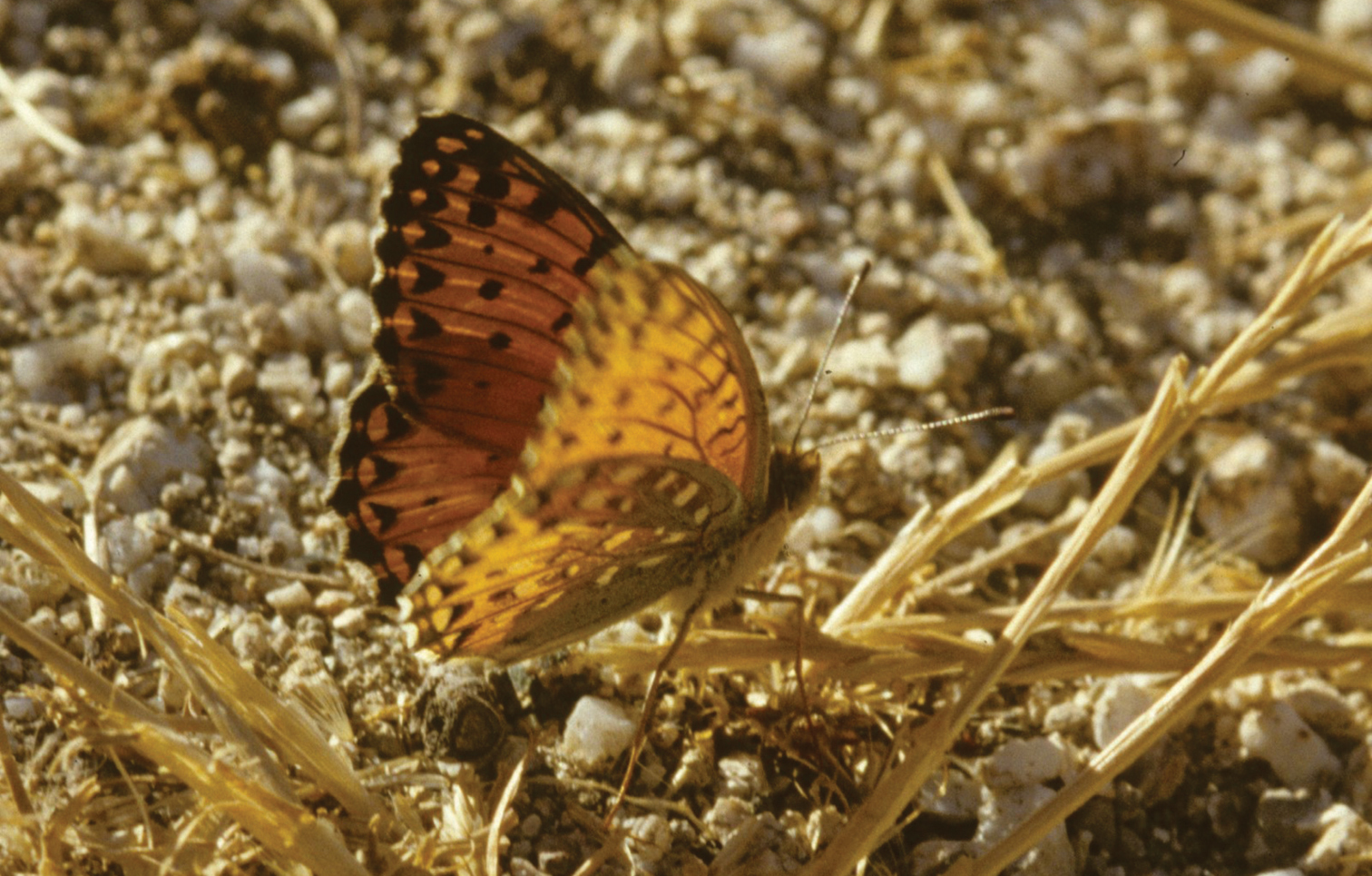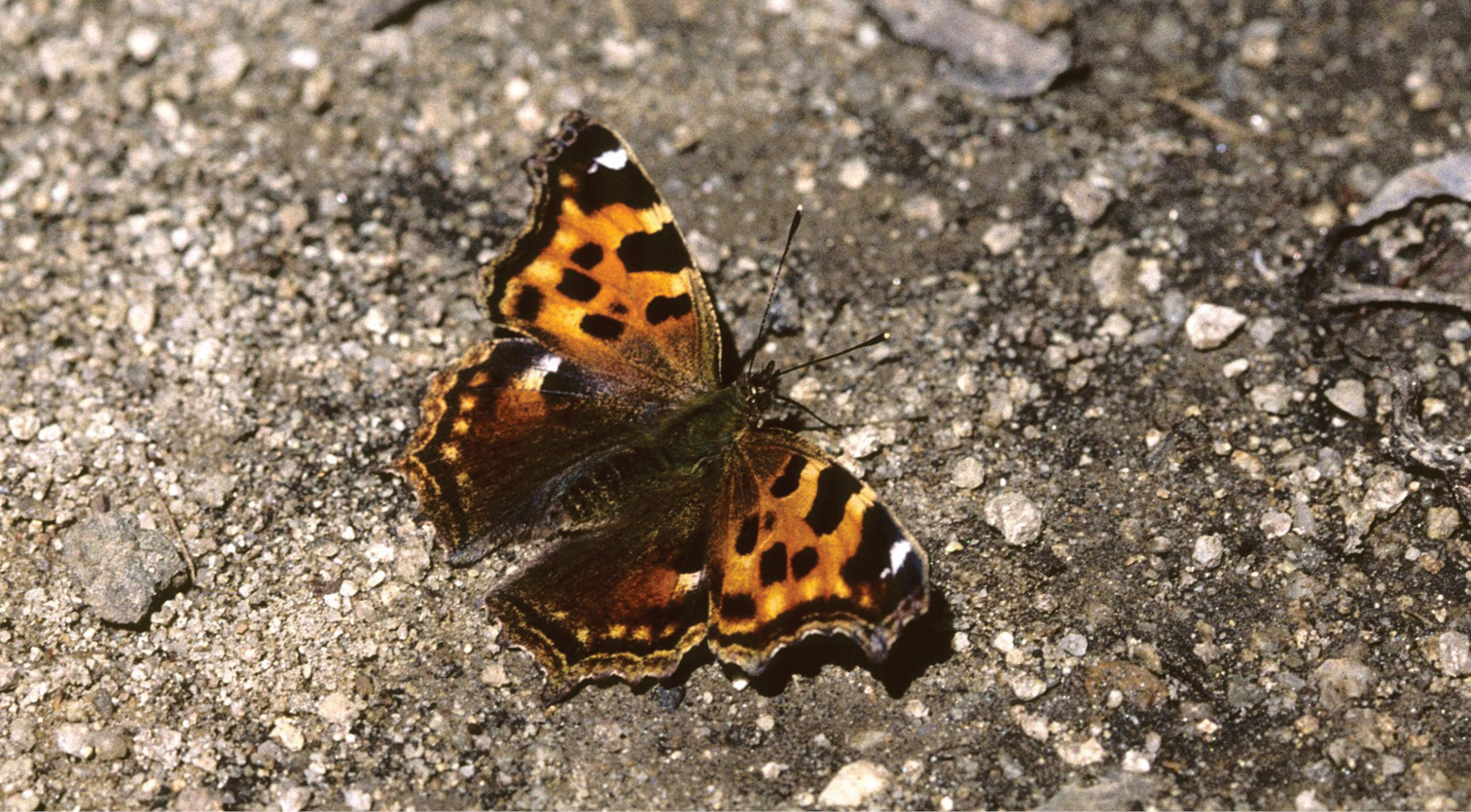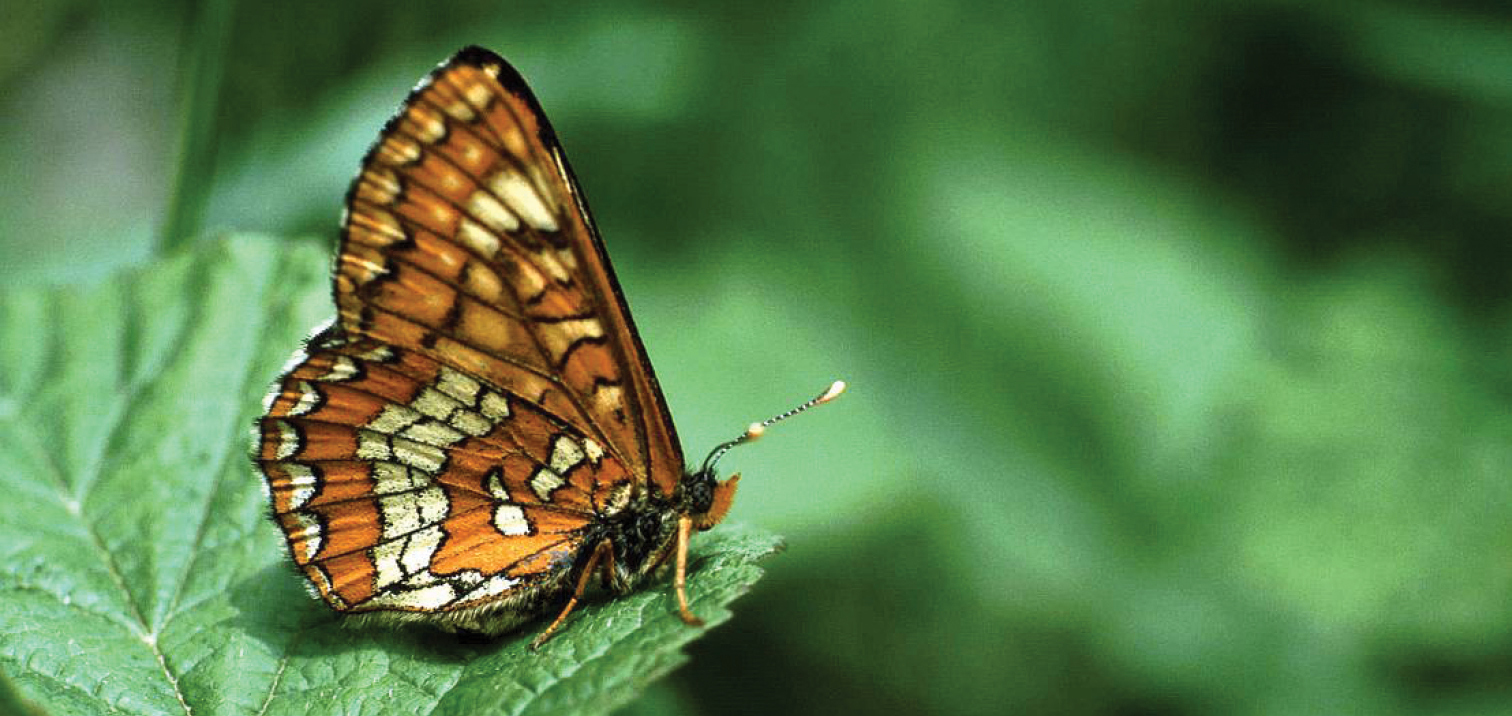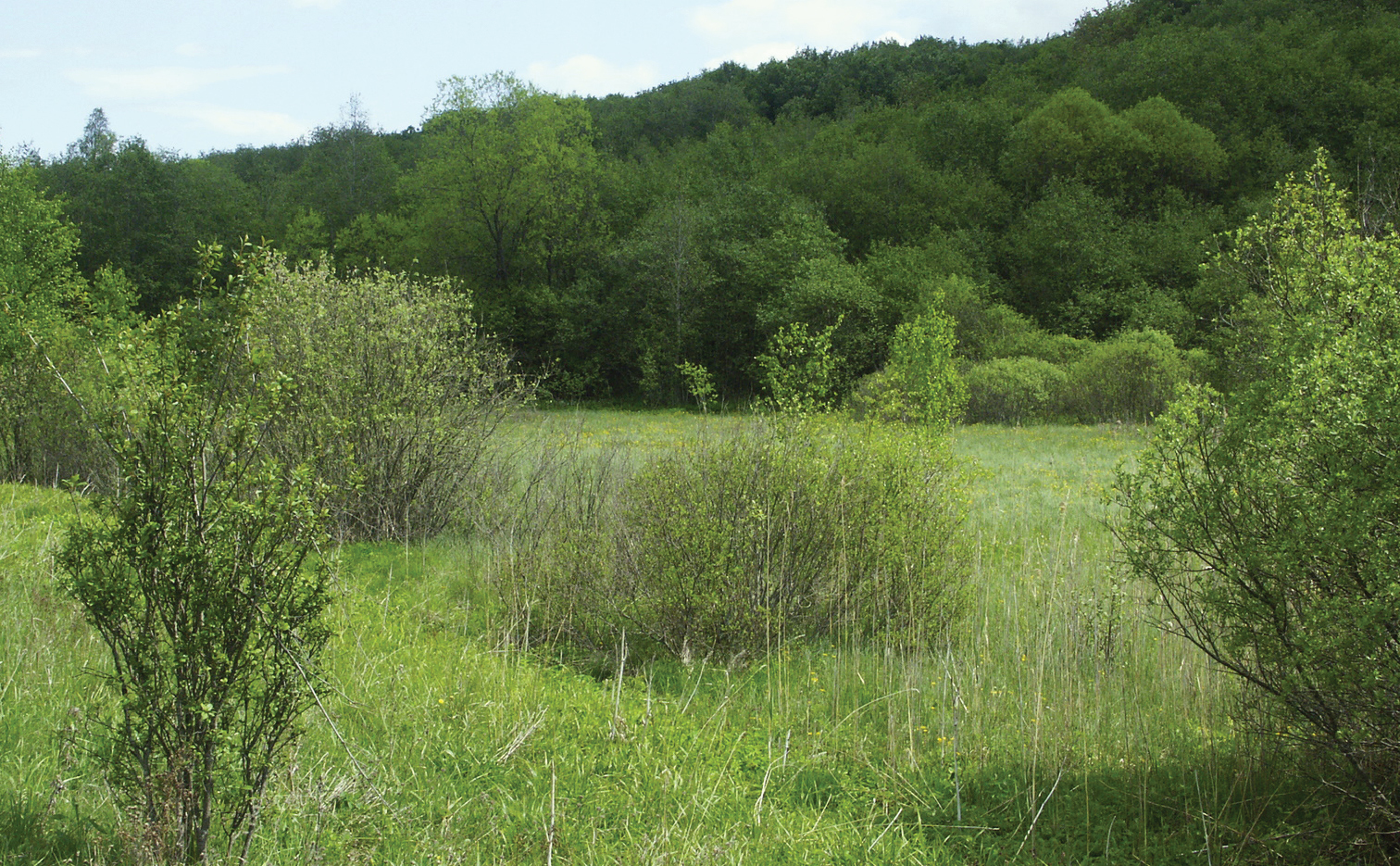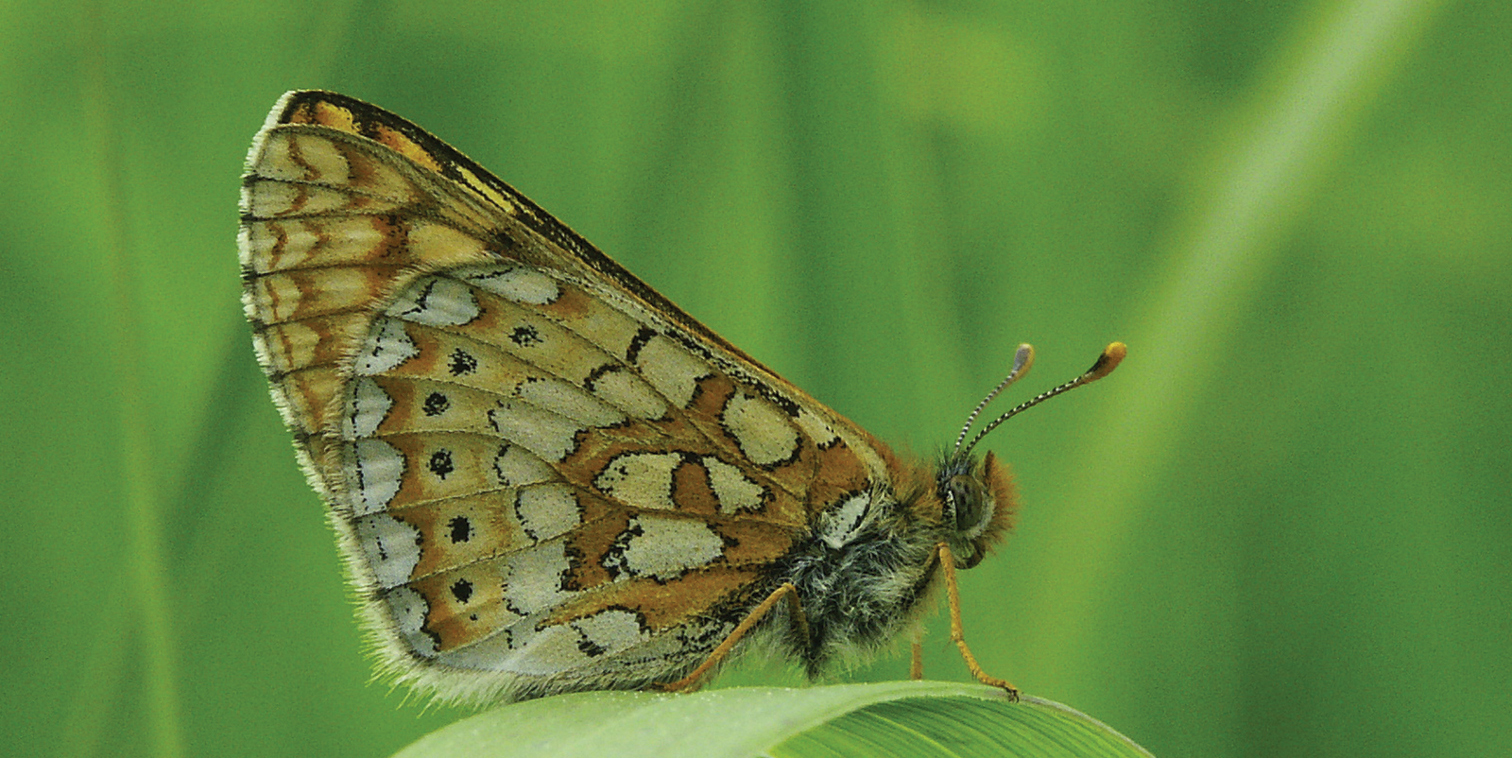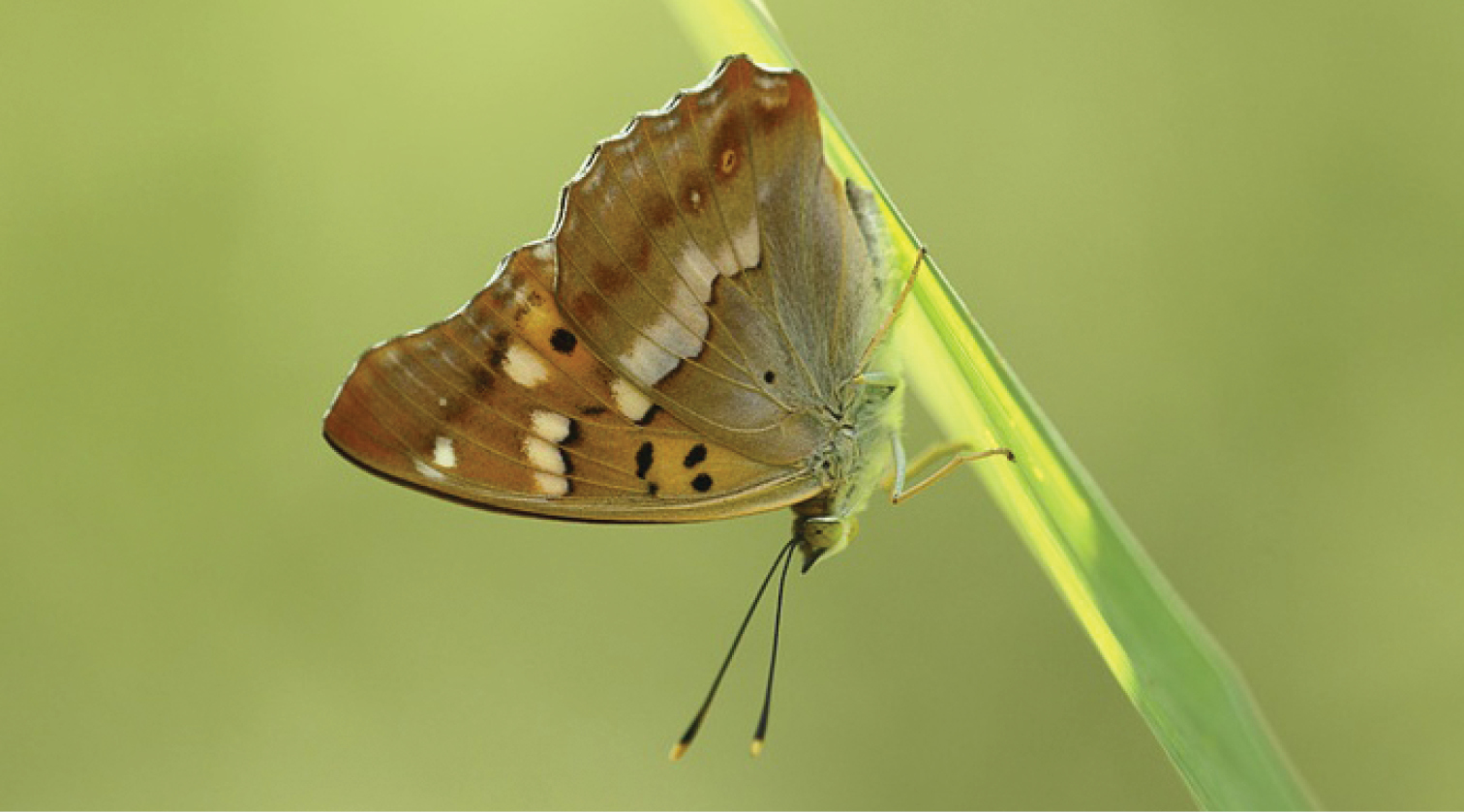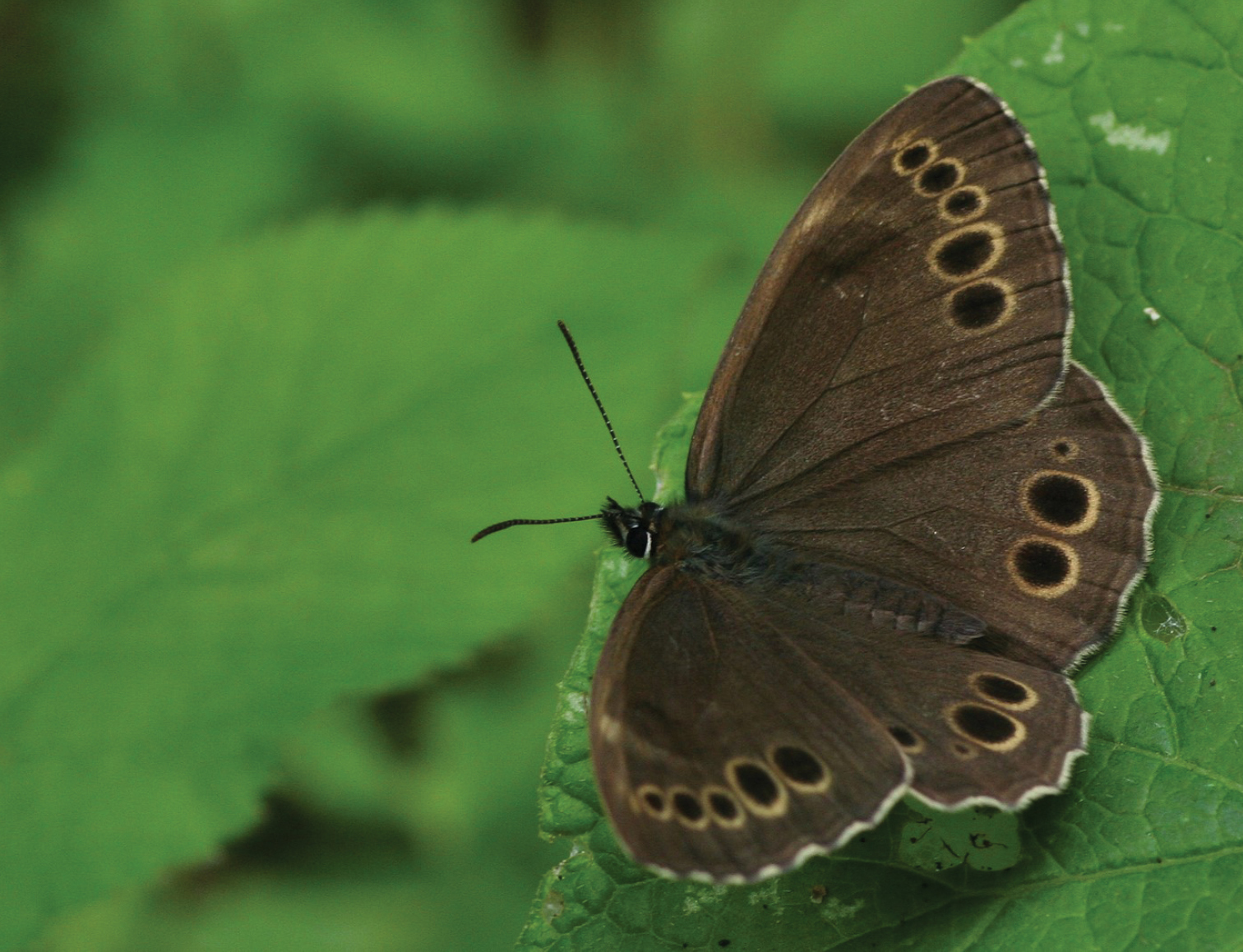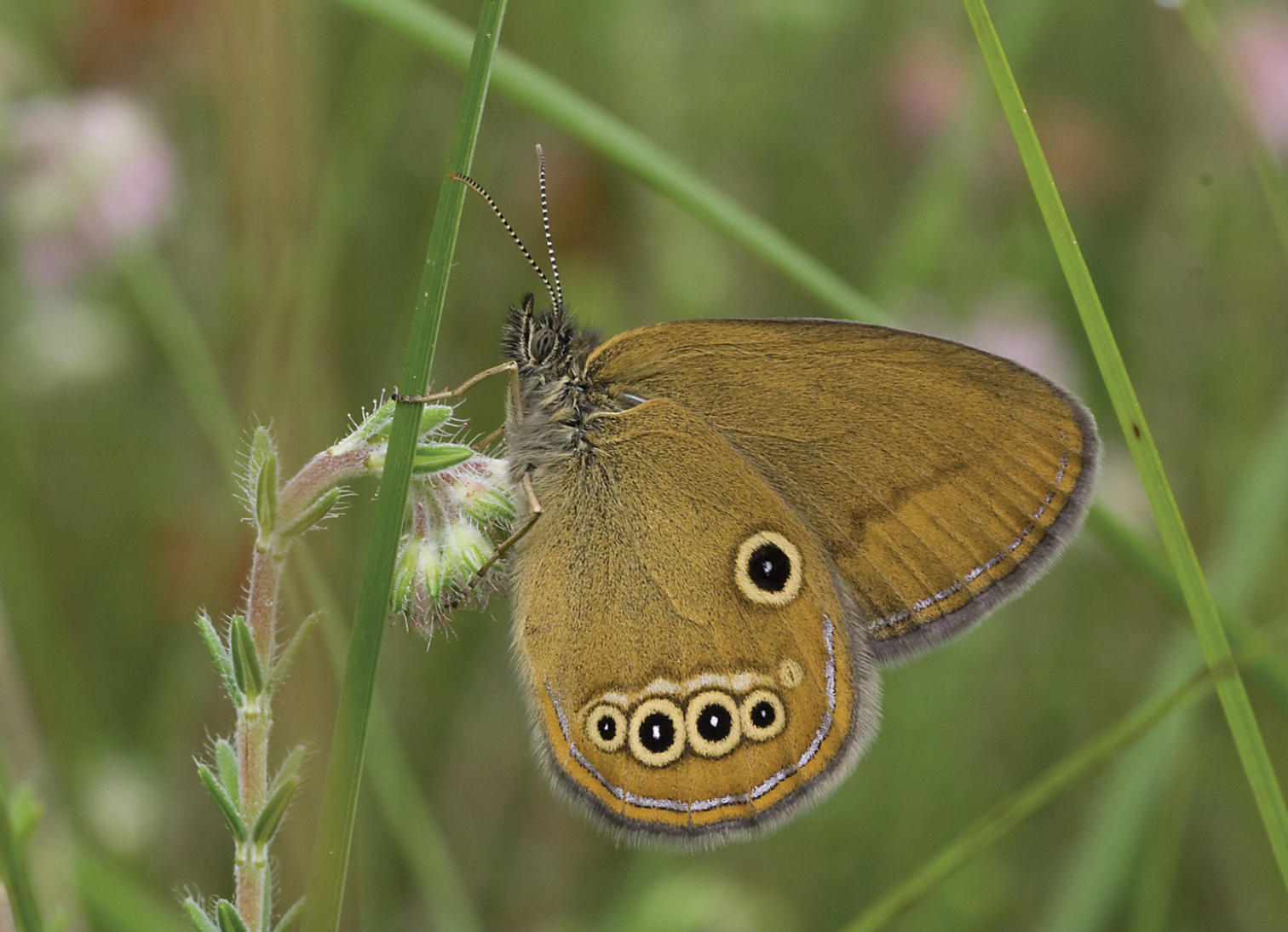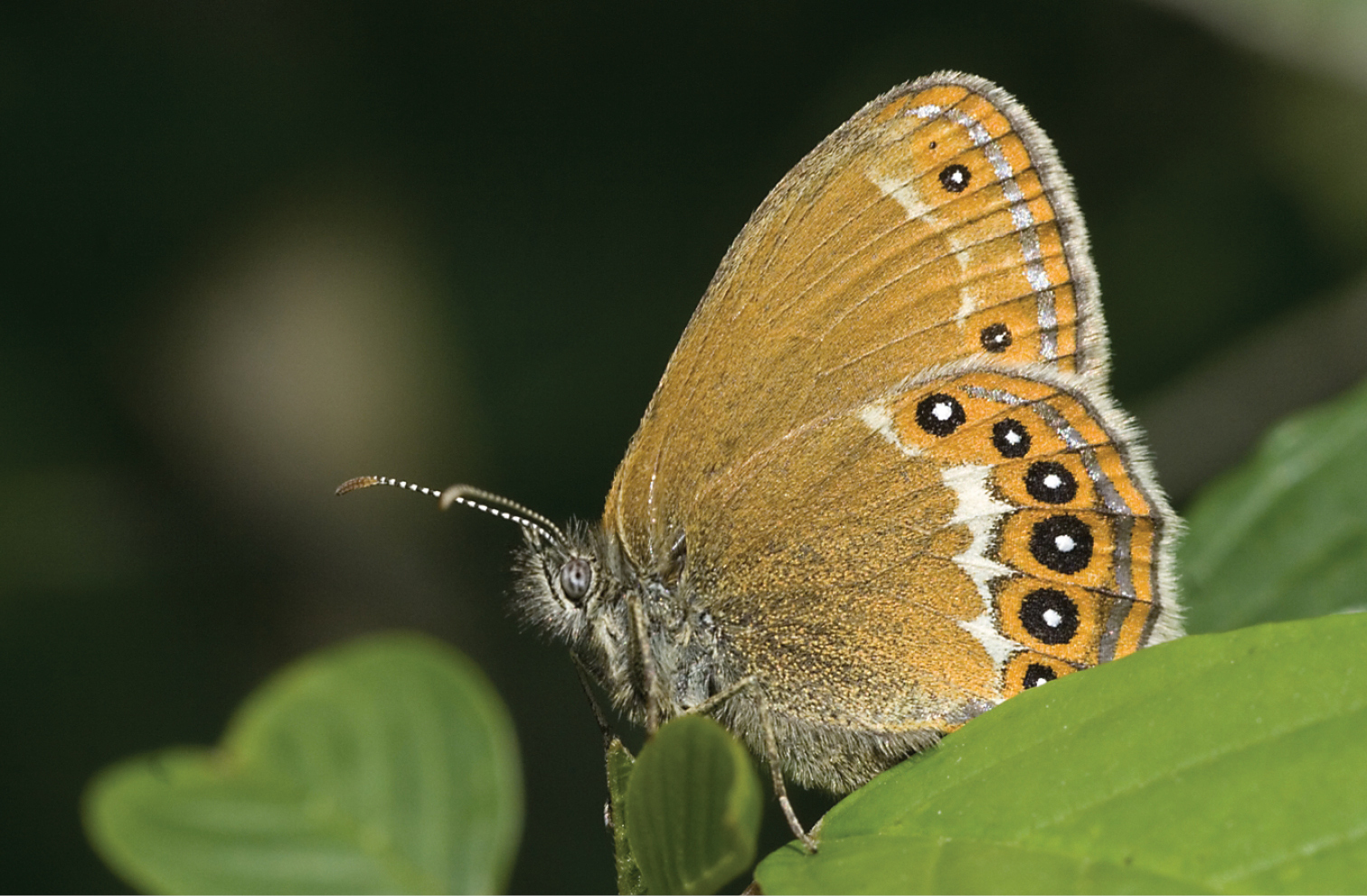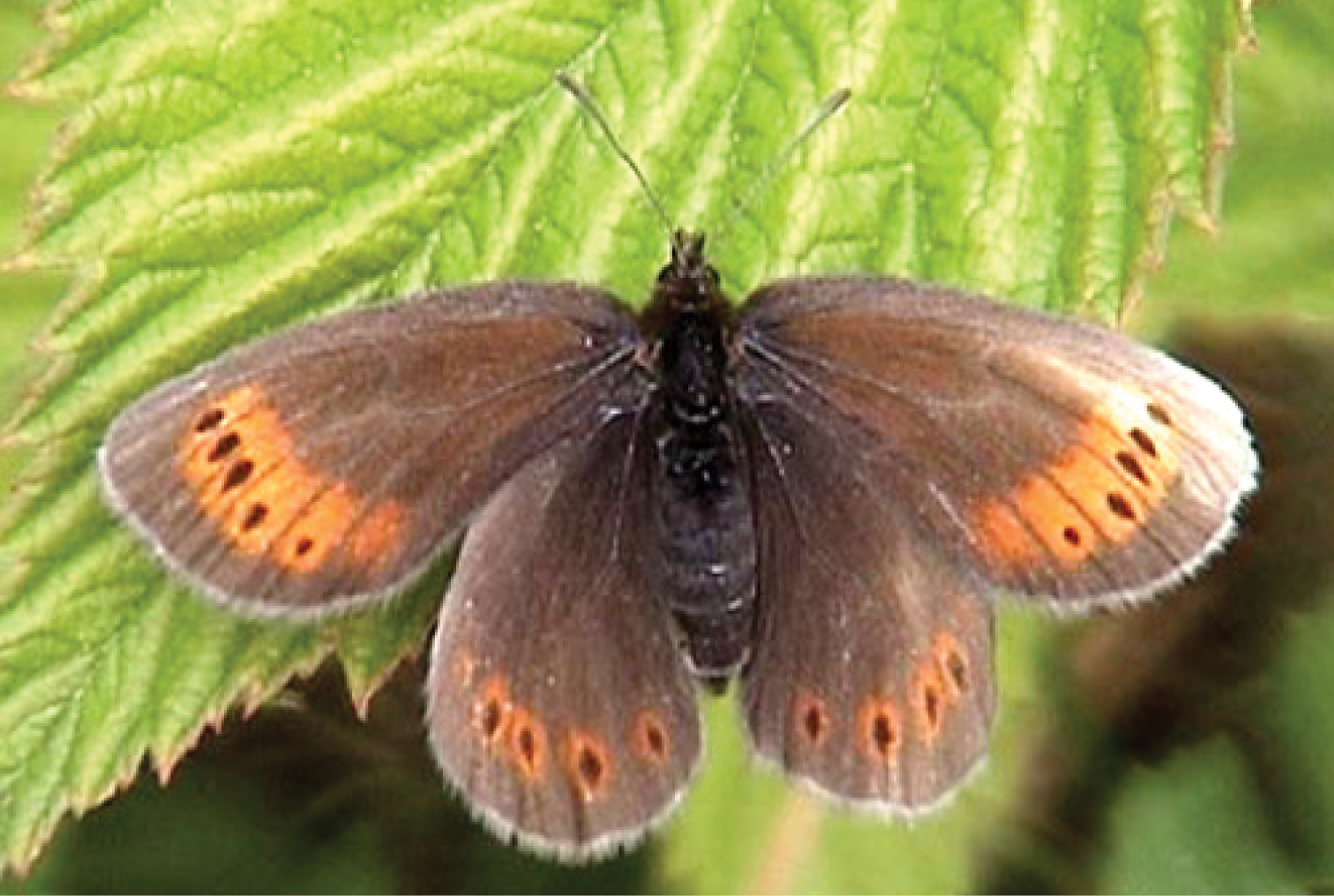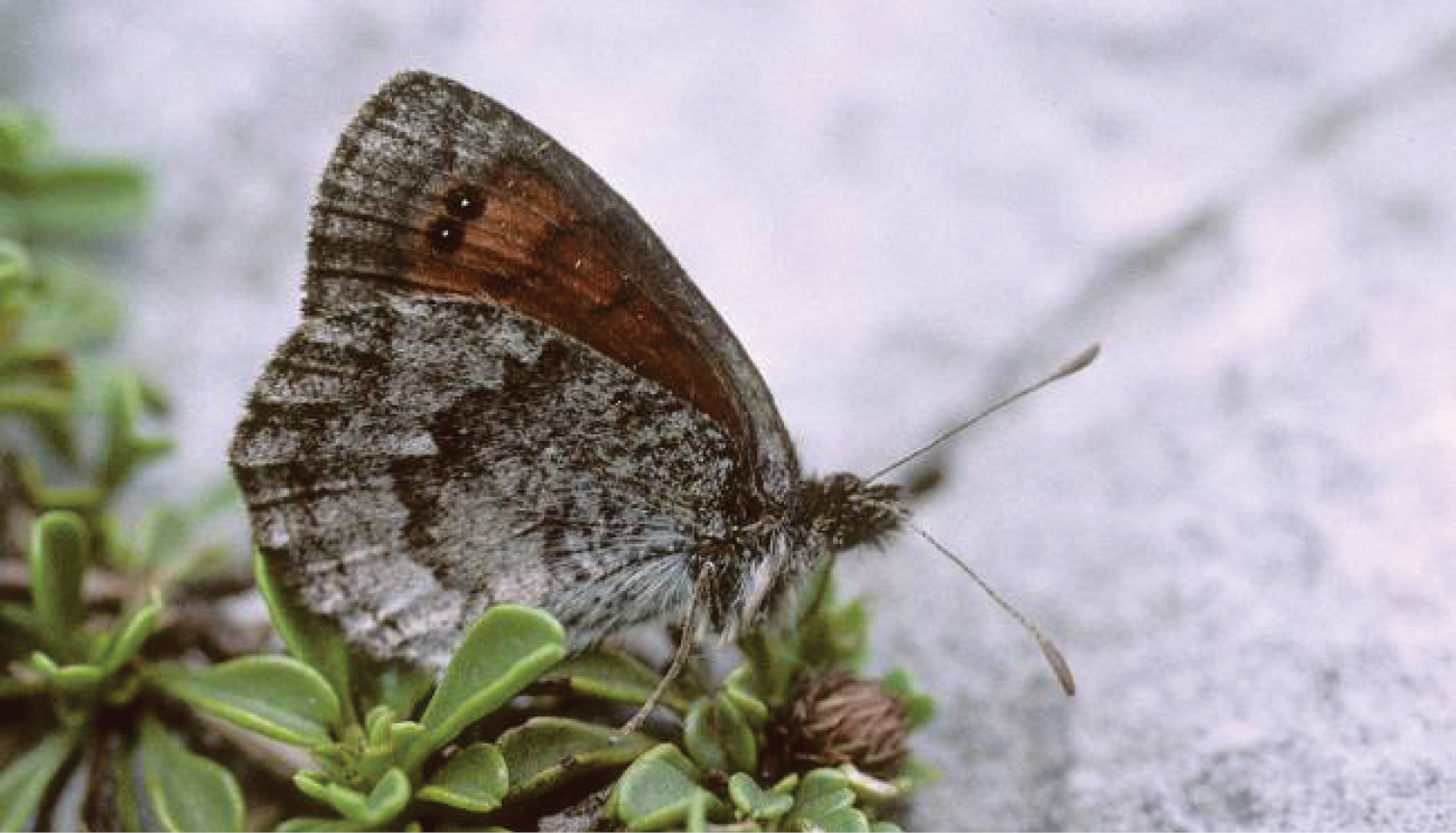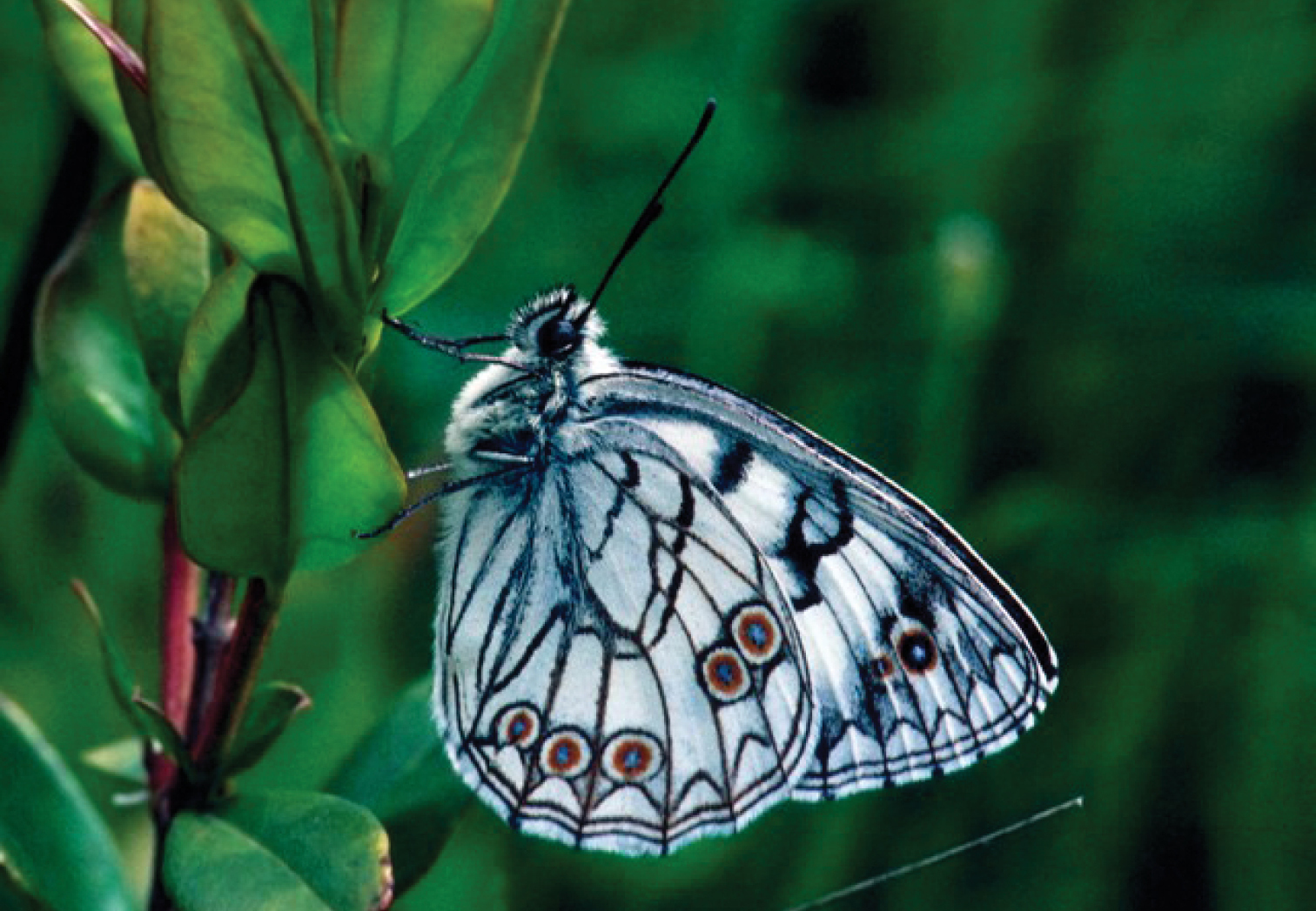






(C) 2012 Chris van Swaay. This is an open access article distributed under the terms of the Creative Commons Attribution License 3.0 (CC-BY), which permits unrestricted use, distribution, and reproduction in any medium, provided the original author and source are credited.
For reference, use of the paginated PDF or printed version of this article is recommended.
Twenty-nine butterfly species are listed on the Annexes of the Habitats Directive. To assist everyone who wants or needs to take action for one of these species, we compiled an overview of the habitat requirements and ecology of each species, as well as information on their conservation status in Europe. This was taken from the recent Red List and their main biogeographical regions (taken from the first reporting on Article 17 of the Directive). Most important are the Dos and Don'ts, which summarize in a few bullet points what to do and what to avoid in order to protect and conserve these butterflies and their habitats.
Butterfly, Europe, European Union, Biodiversity, Natura 2000, Habitats Directive
Papilio alexanor. Photo: Tom Nygaard Kristensen.
Since its introduction in 1994, the Habitats Directive (Council Directive 92/43/EEC on the Conservation of natural habitats and of wild fauna and flora) has become a fundamental and increasingly important way of implementing nature conservation in the European Union. It aims to protect some 220 habitats and approximately 1, 000 species listed in the Directive’s Annexes. Annex II covers species whose conservation requires designation of Special Areas of Conservation while Annex IV lists species of community interest in need of strict protection. The Directive led to the establishment of a network of Special Areas of Conservation, which together with the existing Special Protection Areas under the Birds Directive form a network of protected sites across the European Union called Natura 2000.
Twenty-nine butterfly species are listed on the Annexes of the Habitats Directive
We hope this overview will help member states, nature wardens, farmers, civil servants, butterfly enthusiasts and everyone who wants to help Butterfly Conservation Europe in preserving the natural heritage of Europe, especially its butterflies. As butterflies are good indicators of wildlife rich habitats, the guidelines will help conserve overall biodiversity.
This document aims at describing what to do (and what not to do) to preserve butterflies and their habitats, listed on the annexes of the Habitats Directive. This Zerynthia polyxena on a flower rich meadow in Greece is one of them. Photo: Tom Nygaard Kristensen.
Butterflies usually exist in a network of local populations with some exchange of adults between them to form a metapopulation. Management should aim to maintain this population network across the landscape, accepting that not every locality may be suitable at any one time (though some core sites will be). Progressive loss of habitat suitability across a landscape, or new barriers to dispersal, can lead to loss of local populations and eventually regional extinction of a species through the breakdown of metapopulations.
2. Maintain active pastoral systemsGrassland is the single most important habitat for butterflies and abandonment is the biggest single threat in much of the EU, although the fundamental destruction of (especially moist) ‘unimproved’ meadows and pastures though agricultural intensification still causes major losses and is a particular threat to member states in eastern Europe, e.g. Poland and Hungary. Abandonment can temporarily lead to good conditions for many species, but will soon lead to scrub encroachment and eventual loss of suitable breeding conditions as open grassland turns to woodland. The maintenance of open grassland is thus essential, usually by the maintenance of active traditional pastoral systems, including livestock grazing and hay cutting. The extensive use of fertilizers should be avoided. Socio-economic conditions will need to be considered to ensure such pastoral systems survive.
Traditional hay making provides optimal conditions for many butterflies. Photo: Chris van Swaay.
Grassland butterflies each have their own specific habitat requirements, especially in the typically inconspicuous larval stage, so management should aim to provide a range of conditions, often based around traditional land use patterns. Some species require short vegetation for breeding, while others require higher vegetation. Others still require mosaics of vegetation types. Managing for habitat variety across a landscape is thus essential to conserve the full range of typical species.
4. Avoid uniform management (especially in hay meadows)Butterfly populations can be badly damaged, or can even become extinct, following intensive and uniform management, notably hay cutting. Cutting dates should be varied as much as possible across each Natura 2000 site so that not all areas are cut within a narrow time window. Ideally a mosaic of small scale cutting should be implemented, replicating traditional management before mechanisation. This variation in management, both in time and in space, should also be applied in other habitats, like wet meadows at the edges of peat bogs, moors and shallow bogs.
5. Habitat mosaics are crucialMany butterflies use resources found in a range of habitat types and require mosaics of different habitats in the landscape. For example, some species breed along scrub or wood edges and need a mixture of scrub and grassland. Other species may lay eggs in one type of habitat and use nectar resources in another. The spatial scale of the mosaic will vary from region to region, and will often depend on the traditional land use pattern. Sometimes it will be small fields with small blocks of scrub or woodland, while in more extensive landscapes the mosaic may be very large scale. Many, if not all butterfly species prefer some wind-shade, especially in more windy areas.
6. Active woodland management is often essentialMost woodland butterflies require some form of active management and this is essential for the survival of several threatened species. Management can either be regular thinning or rotational coppicing or planting. Some species also require the maintenance of open habitats within woodland, such as sunny clearings or paths/tracks. Traditional management is often a useful guide to suitable management, but may need to be adapted to suit modern timber markets. In Nordic countries as well as in many countries in Eastern Europe, woodland areas with plenty of wide open corridors with natural vegetation are important not for woodland species only, but are also inhabited by the majority of grassland species.
A mosaic of management combined with a flower rich road verge provides a wealth of butterflies. Photo: Chris van Swaay.
Some form of biological monitoring of Natura 2000 sites is essential to ensure management is maintaining the designated features or will improve degraded habitats. Butterflies are a sensitive indicator group that can be used to assess change (both positive and negative) and inform decision making. Many butterflies are easy to identify and there are often local volunteer groups or societies who can help provide data. Monitoring can be as simple as successive species inventories, or can be structured around formal sampling procedures such as butterfly transects. The latter are more time consuming but can provide accurate population trends that can show deleterious changes at an early stage.
Red List Link: http://ec.europa.eu/environment/nature/conservation/species/redlist/downloads/European_butterflies.pdf
Selected references
(
© EEA (http://www.eea.europa.eu)
E: Southern Festoon
F: La Diane
D: Osterluzeifalter
Habitat and ecology
The caterpillars of the Southern Festoon live on various birthworts, such as Aristolochia clematitis, Aristolochia rotunda, Aristolochia pallida and Aristolochia pistolochia. Because their foodplants grow in different habitats and the caterpillars also have different foodplants in different areas, this spring butterfly can be found in quite different habitats. In the western part of its range, it can be seen in open places along rivers with the foodplant Aristolochia rotunda. In the mountains, the butterflies can be seen in dry, sunny, rocky places, where Aristolochia pallida and Aristolochia pistolochia grow. In the Pannonian region, the species is found on sites with ruderal vegetation, e.g. along the Danube, but also in vineyards on sunny slopes, where Aristolochia clematitis grows as a weed. In Greece, the butterfly occurs in damp areas, as well as on dry slopes, according to the species of birthwort used as foodplant. The eggs are laid singly or in small groups on the underside of the leaves, where the caterpillars are usually also found. The caterpillars have a striking appearance. Mostly beige with black spots, they have some orange tubercles on each segment, each ending in a black, spiny tuft. The Southern Festoon has one generation a year and hibernates as pupa. Habitats: dry calcareous grasslands and steppes (14%), humid grasslands and tall herb communities (12%), mesophile grasslands (12%), heath and scrub (9%), dry siliceous grasslands (7%), sclerophyllous scrub (7%), alluvial and very wet forests and brush (7%).
Red List link: http://www.iucnredlist.org/apps/redlist/details/174351/1
Red List Status
Europe: Least Concern
EU-27: Least Concern
Conservation Status in EU in 2007 (Article 17 assessment)
Alpine region: not assessed
Continental region: bad
Mediterranean region: not assessed
Pannonian region: favourable
Threats in Europe
This species is not believed to face major threats at the European level in this part of its distribution. However, after 1960 a drastic population decrease started due to the intensification of agricultural practices and the use of pesticides.
Conservation actions
The species is listed on the Habitats Directive Annex 4 and Bern Convention Annex 2. This species occurs in a number of protected areas across its range. No specific conservation actions are needed at a European level, but in countries where the species is in decline important habitats should be protected and managed. The effects should be monitored by Butterfly Monitoring Schemes.
Zerynthia polyxena. Photo: Kars Veling.
Zerynthia polyxena
Dos
- Support the proliferation of its foodplants by keeping and creating ruderal “wasteland” in suitable areas.
Don'ts
- Destroy sites with the foodplant or completely cut the vegetation.
- Mow before the time of pupation (April to July, depending on location).
- Spray insecticides or herbicides in vineyards with the food
Selected references
(
E: Clouded Apollo
F: Le Semi-Apollon
D: Schwarzer Apollo
Habitat and ecology
The Clouded Apollo occurs in rocky regions on damp to moderately dry grasslands and sparse deciduous woodland, forest clearings and edges in the neighborhood of large stands of the larval foodplants of the genus Corydalis. The butterflies can often be seen nectaring on red or purple flowers. Larvae are usually found feeding on foodplants that occur on sunny margins or clearings in the forests. The egg hibernates. In spring, as soon as it has hatched, the small caterpillar starts its search for a suitable foodplant. When fully-grown, it pupates in a closely spun cocoon of fine threads, situated above the ground in the leaves of the foodplant or litter. The Clouded Apollo has one generation a year. Habitats: broad-leaved deciduous forests (22%), alpine and subalpine grasslands (19%), mesophile grasslands (14%), humid grasslands and tall herb communities (10%), mixed woodland (8%), dry calcareous grasslands and steppes (8%).
Red List link: http://www.iucnredlist.org/apps/redlist/details/174210/1
Red List Status
Europe: Near threatened
EU: Least concern
Conservation Status in EU in 2007 (Article 17 assessment)
Alpine region: inadequate
Boreal region: inadequate
Continental region: inadequate
Mediterranean region: unknown
Pannonian region: inadequate
Threats in Europe
This species is especially threatened by changes in the management of semi-natural grasslands and woodland. Both intensification and abandonment will have a negative impact on this butterfly. In light-penetrated rupicolous forests with abundant Corydalis it can survive under natural conditions, without management.
Conservation actions
The species is listed on the Habitats Directive Annex 4 and Bern Convention Annex 2. In countries where the species is in decline important habitats should be protected and managed. The effects of conservation actions should be monitored by a Butterfly Monitoring Scheme.
Parnassius mnemosyne. Photo: Kars Veling.
Parnassius mnemosyne
Dos
- Continue traditional low-intensity management.
- Maintain semi-open woodland by keeping a mosaic of woodland and meadows.
- Create woodland gaps e.g. by coppicing.
- Maintain wide and diverse woodland edges and preserve wide open corridors along forest roads.
- Restore previously occupied localities.
- In Nordic countries maintain meadows with alder strips along rivers and streams that create plenty of suitable habitats for Corydalis solida, and thus indirectly for the butterfly.
Don'ts
- Intensify the management of grasslands where they occur.
- Intensification of forestry should be avoided.
- Abandon management. After abandonment the species can survive for some years, but will disappear soon.
- Replace deciduous forest with coniferous trees.
Selected references
(
E: Apollo
F: l’Apollon
D: Apollo
Habitat and ecology
The Apollo occurs in mountainous areas on steep, sunny slopes with sparse vegetation. In Europe, there are many different subspecies, forms and aberrations, because of the fragmented distribution and consequently, isolation of populations. However, their ecology is similar. The butterflies are found visiting thistles and other flowering plants. The female lays its eggs singly or in small groups on or near the foodplant Stonecrop (Sedum spp.). The eggs develop but the tiny caterpillar hibernates inside the eggshell or as newly hatched larva in its close vicinity. In spring it starts feeding on the buds of the foodplant. The caterpillars of later instars also eat the leaves. When it is time to pupate, the caterpillars look for a safe place between the stones, where they then spin a flimsy cocoon in which to change into a pupa. The Apollo has one generation a year. Habitats: alpine and subalpine grasslands (23%), dry calcareous grasslands and steppes (19%), inland cliffs and exposed rocks (11%), screes (9%), coniferous woodland (7%), broad-leaved deciduous forests (7%).
Red List link: http://www.iucnredlist.org/apps/redlist/details/16249/1
Red List Status
Europe: Near threatened
EU: Near threatened
Conservation Status in EU in 2007 (Article 17 assessment)
Alpine region: inadequate
Atlantic region: unknown
Boreal region: bad
Continental region: bad
Mediterranean region: unknown
Threats in Europe
This species is declining in areas of low altitude. Many lowland populations have gone extinct in the last fifty years. They suffer from fragmentation and isolation. Still large and strong populations are found in the high parts of the Alps and other high mountain ranges. The species is attractive to collectors, especially the subspecies of small lowland populations.
Conservation actions
The species is listed on the Habitats Directive Annex 4, Bern Convention Annex 2 and CITES Appendix II. In Poland, the species only occurs in protected areas. The species is legally protected in many countries. In spite of this legal protection, there is often no special attention to the habitat management. As a consequence many small lowland populations are in decline. The production and implementation of local species action plans are urgently needed.
Parnassius apollo. Photo: Albert Vliegenthart.
Parnassius apollo
Dos
- Keep traditional land uses (i.e. extensive stock grazing and hay-cutting) in mountain areas.
- Maintain traditional extensive grazing management and hay-cutting regimes in alpine regions.
- Allow Sedum-species to grow in between orchards, fields, vineyards, along streets and on rocks.
- Leave room for nectar plants, e.g. thistles.
- Prevent succession of steppe-like habitat to scrubland and forest by removing scrub.
- Monitor populations.
- Restore afforested areas in places where the butterfly lived prior to these plantations.
- Mitigate the effects of climate change that is causing the extinction of populations living in the highest areas of mountain ranges.
Don'ts
- For lowland populations: don’t use pesticides on a large scale, as the larvae that live in between the orchards, vineyards and fields will be killed.
- Remove all herbs, as they are important nectar sources.
- Afforest open areas in mountains of Southern Europe.
- Build new tourist developments, especially related to ski sports in mountain areas and roads facilitating access of tourists to areas with the butterfly.
- Collect specimens, particularly those from rare or isolated subspecies or populations.
- Abandon the sites.
Selected references
(
E: Corsican Swallowtail
F: Le Porte-queue de Corse
D: Korsischer Schwalbenschwanz
Habitat and ecology
The Corsican Swallowtail is a butterfly of open, grassy slopes, often with some scattered rocks and bushes and of slopes with low-growing scrub. Just as the Swallowtail, Papilio machaon, these butterflies show hill-topping behaviour, the males assembling on hilltops or other prominent features in the landscape, waiting for the females to arrive. In Corsica, they are found on three different foodplants, Giant Fennel (Ferula communis), Ruta corsica and Peucedanum paniculatum, different populations being strictly bound to one type of foodplant. However, in Sardinia, the caterpillars are only found on Giant Fennel (Ferula communis). The Corsican Swallowtail has one generation a year and hibernates in the pupal stage. On Corsica reported to do well after forest fires. Habitats: heath and scrub (16%), sclerophyllous scrub (16%), phrygana (16%), dry calcareous grasslands and steppes (16%), dry siliceous grasslands (16%), alpine and subalpine grasslands (16%). This is a European endemic species.
Red List link: http://www.iucnredlist.org/apps/redlist/details/15993/0
Red List Status
Europe: Least concern
EU: Least concern
Conservation Status in EU in 2007 (Article 17 assessment)
Mediterranean region: inadequate
Threats in Europe
This species is not believed to face major threats at the European level.
Conservation actions
The species is listed on the Habitats Directive Annexes 2 and 4, Bern Convention Annex 2 and CITES Appendix I. This species occurs in a number of protected areas across its range. No specific conservation actions are needed at a European level. In France and Italy, not all populations are in Natura 2000 areas.
Papilio hospiton in its habitat. Photo: Tom Nygaard Kristensen.
Papilio hospiton
Dos
- Continue traditional land use characterized by heavy grazing and controlled burning.
Selected references
(
E: Southern Swallowtail
F: l’Alexanor
Habitat and ecology
The Southern Swallowtail is mostly found on warm, dry calcareous slopes with flower-rich vegetation and low-growing bushes. The butterflies prefer slopes that are steep and rocky. They are especially active during the hottest hours of the day. Different foodplants are known, all of them umbellifers. Ptychotis saxifraga is the most important one in the western part of its range, but eggs are also laid on Opopanax chironium, Seseli montanum and Trinia glauca. In the Eastern part, the caterpillars feed mostly on various fennels (Ferula spp.) and also on Opopanax hispidus, Burnet saxifrage (Pimpinella saxifraga), Scaligeria cretica and Wild Parsnip (Pastinaca sativa). The caterpillars eat the flowers and ripening seeds. They seem to prefer plants growing in very sparse vegetation near bare patches. The Southern Swallowtail has one generation a year and passes the winter in the pupal stage. Habitats: phrygana (40%), sclerophyllous scrub (20%), heath and scrub (20%), dry calcareous grasslands and steppes (10%), dry siliceous grasslands (10%).
Red List link: http://www.iucnredlist.org/apps/redlist/details/174220/1
Red List Status
Europe: Least concern
EU: Least concern
Conservation Status in EU in 2007 (Article 17 assessment)
Alpine region: favourable
Mediterranean region: unknown
Threats in Europe
Although this species shows a decline in a part of its European range, it is not believed to face major threats at the European scale.
Conservation actions
The species is listed on the Habitats Directive Annex 4 and Bern Convention Annex 2. This species occurs in a number of protected areas across its range. No specific action is needed at a European level, but in countries where the species is in decline important habitats should be protected and managed. The effects should be monitored by Butterfly Monitoring Schemes.
Papilio alexanor. Photo: Albert Vliegenthart.
Papilio alexanor
Dos
- Maintain traditional extensive management for example with light goat grazing and/or controlled burning.
Don'ts
- Abandon the sites.
Selected references
(
E: Fenton’s Wood White
D: Östlicher Senfweißling
Habitat and ecology
Apart from its greater size and slightly falcate forewings the species can be separated from the other Wood Whites in Europe (Leptidea spp.) by the conspicuous gliding flight displayed by the males. Fenton’s Wood White can be seen on damp, grassy vegetation at the sunny edges of woods, in grassy woodland clearings and on regenerating woodland on grassland. They occur almost exclusively in oak forest and mixed deciduous woods. This butterfly has two generations a year and hibernates in the pupal stage. The larvae feed on Peas, in Europe on Lathyrus niger or Lathyrus vernus with ova being laid almost exclusively on the plants in the shade. In Transylvania, an important larval food plant is the endemic Lathyrus hallersteinii. Habitats: broad-leaved deciduous forests (40%), mesophile grasslands (15%), humid grasslands and tall herb communities (10%), coniferous woodland (10%), mixed woodland (10%).
Red List link: http://www.iucnredlist.org/apps/redlist/details/174284/1
Red List Status
Europe: Near threatened
EU: Endangered
Conservation Status in EU in 2007 (Article 17 assessment)
Alpine region: bad
Continental region: inadequate
Pannonian region: bad
Threats in Europe
In Europe the species is restricted to Central and Eastern Europe, where it is never common and mostly declining. Main threat is change of woodland management, resulting in a decline of the traditional light-penetrated forest structure.
Conservation actions
The species is listed on the Habitats Directive, Annexes 2 and 4. More research is needed on the distribution and ecology of the species. Suitable habitats should be protected and appropriately managed. The effects of conservation actions should be monitored by a Butterfly Monitoring Scheme.
Leptidea morsei. Photo: Rudi Verovnik.
Leptidea morsei
Dos
- Continue traditional low-intensity management to maintain mosaic woodland habitat with large stands of the main larval foodplant Lathyrus niger.
- Maintain sparse woods or create woodland gaps by coppicing.
- Maintain wide and diverse woodland edges and preserve wide open corridors along forest roads.
- Keep flower rich meadows near larval habitats with late season hay-cutting.
Don'ts
- Abandon management of light woods.
- Intensify forestry or produce closed monocultures.
- Remove road edge vegetation mechanically during larval development.
- Replace deciduous forest with conifer trees.
- Intensify the management of nearby flowering meadows.
- Allow woodland grazing.
Selected references
(
E: Danube Clouded Yellow
F: Le Danubien
D: Orangeroter Heufalter
Habitat and ecology
The Danube Clouded Yellow occurs in dry, warm grassland where its foodplant, species of the genus Chamaecytisus, are always abundant. However, the amount of shelter from bushes can vary considerably. While the female lays its eggs on the foodplant, the caterpillars hibernate in the litter layer. It has two to three generations a year. The species shows serious declines, especially at the western edge of its range. Within the last years it disappeared most probably from Germany, the Czech Republic, Austria, Hungary, Slovenia and Serbia. Habitats: dry calcareous grasslands and steppes (30%), mesophile grasslands (21%), dry siliceous grasslands (21%), coniferous woodland (8%), mixed woodland (8%).
Red List link: http://www.iucnredlist.org/apps/redlist/details/174283/1
Red List Status
Europe: Endangered
EU: Critically endangered
Conservation Status in EU in 2007 (Article 17 assessment)
Alpine region: bad
Continental region: inadequate
Pannonian region: bad
Threats in Europe
This species is threatened both by intensification and abandonment of semi-natural grasslands, its main habitat. Furthermore, especially for the westernmost parts, climate change is considered as one of the most important reasons for the decline, but it cannot fully explain the situation over this scale. It is certain that in some cases land-use changes even under Agri-Environmental Schemes have led to drastic declines. In general, loss of habitat and habitat connectivity, unfavourable grassland management (wrong timing or intensity) and climate change (less continental climate) must be considered. At this moment abandonment and intensification of grazing and burning are probably the largest threats to the populations in Eastern Europe.
Conservation actions
The species is listed on the Habitats Directive, Annexes 2 and 4. More research is urgently needed on the distribution and ecology of the species. Important habitats should be protected and appropriately managed. The effects of conservation actions should be monitored by a Butterfly Monitoring Scheme. It benefits from proper management of semi-natural grasslands. The species will benefit from the establishment of areas of High Nature Value Farmland. In Hungary the species used to occur only in protected areas. However, there are no recent records from Hungary despite deliberate surveys.
Colias mymidone. Photo: Tom Nygaard Kristensen.
Colias myrmidone
Dos
- Maintain herb-rich meadows with scattered stands of the foodplant by mosaic management with light grazing or rotational mowing.
- Maintain wide range of habitats with nectar sources (herb-rich meadows, broad forest edges and very open forests).
- Maintain traditional extensive land-use to encourage mobility across the landscape.
- Implement national action plans with site- and specific actions.
- Follow up the actions in the Species Action Plan (see http://bc-europe.org/SpeciesActionPlans/EUSAP_Colias_myrmidone_final_draft.pdf)
Don'ts
- Intensify land-use on a large scale, e.g. by reforestation.
- Carry out intensive mowing on meadows.
- Carry out intensive grazing on pastures (overgrazing by sheep is harmful as they eat the fertile shoots of Chamaecytisus!).
- Change the management leading to the closure of the forest and loss of the woodland pasture mosaic landscape.
- Abandon management which leads to overgrowing of grasslands.
- Burn the sites in spring or fall.
Selected references
(
E: Violet Copper
F: Le Cuivré de la bistorte
D: Blauschillernder Feuerfalter
Habitat and ecology
The Violet Copper is a rare butterfly that is often confined to very small sites, where it may be seen in large numbers. It is found in swampy, wet grassland with sufficient wind shelter (shrub, forest edges) and rough vegetation bordering streams and lakes. In Central Europe, eggs are laid on the underside of the leaves of Bistort (Polygonum bistorta). In Transylvania mostly humid or damp oak forest clearings with mosaic-like vegetation. In the north of its range Viviparous Bistort (Polygonum vivipara) is also used as larval foodplant. The young caterpillars eat the lower epidermis, thus making the characteristic “windows”. It passes the winter as a pupa. Its western populations have one, the eastern populations mostly two generations a year. Habitats: humid grasslands and tall herb communities (37%), alpine and subalpine grasslands (10%), water-fringe vegetation (8%), fens, transition mires and springs (8%), dry calcareous grasslands and steppes (5%), mesophile grasslands (5%).
Habitat Lycaena helle, Eifel, Germany. Photo: Chris van Swaay.
Red List link: http://www.iucnredlist.org/apps/redlist/details/174383/1
Red List Status
Europe: Endangered
EU: Least concern
Conservation Status in EU in 2007 (Article 17 assessment)
Alpine region: bad
Boreal region: bad
Continental region: bad
Threats in Europe
Land drainage and agricultural improvements and afforestation are the most important threat for this species. In some cases, because of agricultural abandonment, meadows get covered with rough vegetation and finally trees and shrubs. Central European populations are often small and isolated, making it hard for the species to re-colonise former sites. These populations also sometimes suffer wrong management, e.g. mowing at the wrong time of year. In Northern Europe the species is threatened by abandonment of peripheral agricultural grounds, fertilization and afforestation, the species has lost more than half of its habitats (and continues to lose) during the last 30 years.
Conservation actions
The species is listed on the Habitats Directive, Annexes 2 and 4. In Belarus and Poland, it only occurs in protected areas. None of the populations are in Natura 2000 areas in Austria. In spite of legal protection of important butterfly habitats special management of these habitats for Lycaena helle is only conducted in few countries (e.g. in Belgium). It requires sensitive management of semi-natural grasslands and would benefit from the establishment of areas of High Nature Value Farmland. Populations should be monitored closely, for example by Butterfly Monitoring Schemes. There is an action plan for monitoring of this species under construction in Sweden.
Lycaena helle. Photo: Chris van Swaay.
Lycaena helle
Dos
- Maintain a low-intensity management: grazing with very light stocking rates (< 0.2 Lifestock Units ha−1), preferably used in a rotational way, and avoiding sensitive periods of the butterfly life cycle (April to July, best is starting in August, accompanied by periodic clearing and outrooting of shrub (mainly Salix).
- Preserve humid forest clearings and protect them from re-forestation. Some fringe vegetation is needed for roosting butterflies.
- Selectively cut encroaching scrub if necessary.
- Maintain or reconstruct the natural water regimes of brooks and small rivers to keep the soils in an oligotrophic state (which is supported by high water ground level).
Don'ts
- Drain the habitats where the species occurs.
- Abandon the areas: instead try to maintain a low level of management.
- Fertilize the habitats.
Selected references
(
E: Large Copper
F: Le Grand Cuivré
D: Grosser Feuerfalter
Habitat and ecology
The Large Copper occurs in marshy habitats and on the peaty banks of lakes, rivers and streams and more to the East also on waste lands. Nectar plants are important, especially for the females. Eggs are laid on docks (Rumex spp.) like Rumex crispus, Rumex obtusifolius and Rumex hydrolapathum, but never on sorrels (like Rumex acetosa or Rumex acetosella). The young caterpillars first eat from the underside of the leaves, making the characteristic ‘windows’. Later caterpillars feed on the whole leaf. They hibernate when half-grown between withered leaves at the base of the foodplant. They are sometimes associated with ants (Myrmica rubra and Lasius niger). The Large Copper has several subspecies in Europe. The largest of them, Lycaena dispar batavus, is confined to the extensive wetlands in the north of The Netherlands. The males of this subspecies occupy territories in the warmest places in depressions in the vegetation. Their caterpillars feed only on Water Dock (Rumex hydrolapathum). There are two smaller (and less threatened) subspecies, Lycaena dispar rutilus and Lycaena dispar carueli that use also other docks as foodplants. The subspecies Lycaena dispar batavus has one generation a year and the other subspecies one, two or sometimes even three. Habitats: humid grasslands and tall herb communities (26%), water-fringe vegetation (14%), fens, transition mires and springs (11%), mesophile grasslands (8%), broad-leaved deciduous forests (7%), blanket bogs (5%), dry calcareous grasslands and steppes (5%).
Habitat Lycaena dispar, Netherlands. Photo: Jaap Bouwman.
Red List link: http://www.iucnredlist.org/apps/redlist/details/12433/1
Red List Status
Europe: Least concern
EU: Least concern
Conservation Status in EU in 2007 (Article 17 assessment)
Alpine region: inadequate
Atlantic region: inadequate
Boreal region: favourable
Continental region: inadequate
Mediterranean region: unknown
Pannonian region: inadequate
Threats in Europe
Where the species lives in marshland it is threatened by reclamation, groundwater extraction or desiccation. Grassland and wasteland habitats become unsuitable if they are abandoned and become invaded by shrubs and trees.
Conservation actions
The species is listed on the Habitats Directive Annexes 2 and 4 and Bern Convention Annex 2. More research is needed on the distribution and ecology of the species. Suitable habitats should be protected and appropriately managed. The effects of conservation actions should be monitored by a Butterfly Monitoring Scheme. In The Netherlands, the species only occurs in protected areas. In Estonia, Finland and Germany, it populations also occur outside Natura 2000 areas.
Lycaena dispar. Photo Chris van Swaay.
Lycaena dispar
Dos
- Manage wet grasslands by extensive mowing or grazing to maintain larval habitats (e.g. docks as foodplants) and maintain rarely used sites (with higher stands of wetland grasses and sedges) for adult interactions (mating).
- Particularly in the Netherlands maintain stands of Rumex hydrolopathum along dike and pond margins.
- Create and maintain wastelands and sites with ruderal vegetation in the eastern and southern part of its range.
Don'ts
- Use drainage or any other action that sinks the water level.
- Intensify or abandon the area. The species needs regular management, but at a very low level.
Selected references
(
E: Bavius Blue
Habitat and ecology
The Bavius Blue occurs in small isolated populations on flower-rich, dry grassland, on dry, stony slopes and on open patches in shrub and in vineyards on calcareous soil. Various species of Salvia are used as foodplant, including Sage (Salvia officinalis), Salvia nutans, Salvia verbenaca and Whorled Clary (Salvia verticillata). Most important food plant in Romania is Salvia nutans as character species of steppic grasslands. The caterpillars feed mostly on the flowers, but sometimes also on the leaves. They are frequently found with ants. The Bavius Blue usually has one prolonged generation a year. In Peloponnesus, a partial second generation may occur. The pupa hibernates. In Eastern- and South-Eastern Europe there are many different endemic subspecies. In Transylvania the subspecies hungarica occurs, in South-East Romania it is the subspecies egea. In Peloponnesus the subspecies casimiri is found, while in Macedonia another subspecies macedonicus has been described. The habitat structure, ecology and biology was studied on populations of the subspecies hungarica in Transylvania. The largest of these populations has been monitored since 1977. In this period large natural population fluctuations have been recorded. The butterflies do not disperse easily; they hardly ever leave their breeding ground. Habitats: dry calcareous grasslands and steppes (50%), phrygana (20%), dry siliceous grasslands (10%), sclerophyllous scrub (10%), screes (10%).
Red List link: http://www.iucnredlist.org/apps/redlist/details/174375/1
Red List Status
Europe: Least concern
EU: Least concern
Conservation Status in EU in 2007 (Article 17 assessment)
Mediterranean region: unknown
Continental region (not assessed for article 17, BCE expert opinion): inadequate (Transylvania)
Black Sea region (not assessed for article 17, BCE expert opinion): unknown
Threats in Europe
Although this species shows a decline in a part of its European range, it is not believed to face major threats at the European scale. However, according to recent studies, the species is within the EU 27 probably more endangered than its threat category suggests.
Conservation actions
The species is listed on the Habitats Directive, Annexes 2 and 4. It is unknown if all populations are in Natura 2000 areas in Greece. Not all populations are in Natura 2000 areas in Romania. More research is needed on the distribution and ecology of the species. Suitable habitats should be protected and appropriately managed. The effects of conservation actions should be monitored by a Butterfly Monitoring Scheme.
Pseudophilotes bavius. Photo Albert Vliegenthart.
Pseudophilotes bavius
Dos
- Manage dry grasslands by traditional extensive grazing and mowing once a year.
- Maintain connectivity between habitat patches.
- It is necessary to extend the protected area over the habitat of all known populations.
- Implement national action plans for local conservation of the subspecies and its habitat.
Don'ts
- Abandon traditional management of dry grassland.
- Intensify grazing and mowing of dry grasslands by higher stocking rate and longer grazing periods.
- Allow afforestation of dry grassland areas with Pinus sp. and Robinia pseudoacacia.
- Use terrace-shaped slopes as vineyards.
Selected references
(
Name in the Habitats Directive: Maculinea arion
E: Large Blue
F: l’Azuré du serpolet
D: Schwarzgefleckter Bläuling, Thymian-Ameisenbläuling
Habitat and ecology
The Large Blue occurs locally on dry, open grasslands on limestone and sandy areas. It is one of the larger, more conspicuous blues. The females lay their eggs on different species of thyme (Thymus spp.), and on warmer sites also on Marjoram (Origanum vulgare). The caterpillars feed on the buds and flowers of the foodplant. After a few weeks they leave their foodplant and allow themselves to be taken by workers into the nests of any species of Myrmica ant, although over most of Europe survival is high only with Myrmica sabuleti, which must adopt at least 67% of larvae for a population to persist; in north-east Europe there is some evidence of a host switch to Myrmica lobicornis. The caterpillars feed on the ant grubs, hibernating and pupating there as well. Habitats: dry calcareous grasslands and steppes (20%), dry siliceous grasslands (15%), mesophile grasslands (9%), coniferous woodland (7%), alpine and subalpine grasslands (7%), humid grasslands and tall herb communities (7%), heath and scrub (6%).
Habitat Phengaris arion, Eifel, Germany. Photo: Chris van Swaay.
Red List link: http://www.iucnredlist.org/apps/redlist/details/12659/1
Red List Status
Europe: Endangered
EU: Endangered
Conservation Status in EU in 2007 (Article 17 assessment)
Alpine region: bad
Atlantic region: unknown but not favourable
Boreal region: bad
Continental region: bad
Mediterranean region: unknown
Pannonian region: bad
Threats in Europe
In many parts of Europe this species is restricted to nature reserves. Here the main threat is inappropriate management, as this species is very susceptible to small changes in grazing pressure or other changes in management. Where the species is more widespread, loss of habitat by agricultural intensification and abandonment, as well as afforestation, are the main threats.
Conservation actions
The species is listed on the Habitats Directive Annex 4 and Bern Convention Annex 2. Phengaris arion is one of the best investigated butterfly species in Europe. Ecological demands are relatively well known especially in W-Europe, but special attention for the species in habitat management is only given in a few, mainly Western European countries (e.g. United Kingdom). Suitable habitats should be protected and appropriately managed. The effects of conservation actions should be monitored by a Butterfly Monitoring Scheme. In Belgium, Denmark and in the United Kingdom, the species only occurs in protected areas. The species and its habitat are legally protected in many countries. Phengaris arion has been reintroduced in the United Kingdom. It benefits from proper management of semi-natural grasslands. It requires sensitive management of semi-natural grasslands and would benefit from the establishment of areas of High Nature Value Farmland. In central-southern France (Dordogne, Rhone valley) Phengaris arion supports a beautiful, probably host-specific (and hence more endangered) parasitoid Neotypus coreensis whose ecological requirements are unknown.
Phengaris arion. Photo Chris van Swaay.
Phengaris arion
Dos
- Manage grasslands by grazing to maintain open, sunny conditions. The level of grazing will depend on latitude and local micro-climate. Throughout its range, the aim is to maximize the abundance of the host ant Myrmica species in areas where one or more of the initial foodplant grows.
- In the northern part of the species range and at high altitudes, aim for a short turf of 2–5 cm but remove grazing from early May - late July to avoid removal of flower-heads of the initial foodplant, Thymus spp. Also maintain some patches of scrub cover to provide shelter and warm conditions.
- In central and southern parts of the species range, grazing can be lighter and more extensive to create a range of turf heights and abundant food-plants such as Origanum. On poor soils in southern Europe, Origanum-using populations also thrive in abandoned grassland for up to 7 years after abandonment, at which stage periodic clearances are essential to restore the succession.
- Where scrub is present, manage by cutting on rotation and aim for overall cover of less than 20% in core breeding areas.
- Monitor populations of the butterfly and its host ant carefully, and adjust management when needed.
Don'ts
- Intensify or abandon the fields, except temporarily in hot climates.
- Overgraze sites, especially from mid-summer when flower-heads are removed.
Selected references
(
Name in the Habitats Directive: Maculinea teleius
E: Scarce Large Blue
F: l’Azuré de la sanguisorbe
D: Grosser Moorbläuling, Heller Wiesenknopf-Ameisenbläuling
Habitat and ecology
The Scarce Large Blue can be found in moderately nutrient-rich meadows, edges with rough vegetation and parts of shallow bogs with Great Burnet (Sanguisorba officinalis). In northern Europe, it occurs in open, short vegetation, but in the warm, southern regions, it is also found in rough vegetation. The butterflies tend to keep near the foodplants. The small caterpillars only feed on the flowerheads for two or three weeks. They then go down to the ground where they wait to be picked up by worker ants of the genus Myrmica and carried off to the ants’ nest. There they feed on ant grubs. The caterpillars also hibernate and pupate in the ants’ nest. The main host over most of Europe is Myrmica scabrinodis, with closely related forms or species (with similar management requirements) also used in the south and east. In some regions sufficient individuals also survive with Myrmica rubra for this ant (which prefers later successional stages to Myrmica scabrinodis)to support a few, perhaps temporary, colonies. The Scarce Large Blue has one generation a year. Habitats: humid grasslands and tall herb communities (38%), mesophile grasslands (16%), blanket bogs (12%), water-fringe vegetation (9%), fens, transition mires and springs (9%).
Habitat Phengaris teleius, Netherlands. Photo: Chris van Swaay.
Red List link: http://www.iucnredlist.org/apps/redlist/details/12664/1
Red List Status
Europe: Vulnerable
EU: Vulnerable
Conservation Status in EU in 2007 (Article 17 assessment)
Alpine region: bad
Atlantic region: bad
Boreal region: favourable
Continental region: bad
Pannonian region: inadequate
Threats in Europe
This species is threatened by changes in agricultural management, like drainage, improvement or abandonment.
Conservation actions
The species is listed on the Habitats Directive Annexes 2 and 4 and Bern Convention Annex 2. Suitable habitats should be protected and appropriately managed. As the species in not mobile, it needs areas with large and well connected patches of habitat. The effects of conservation actions should be monitored by a Butterfly Monitoring Scheme. In The Netherlands, the species only occurs in protected areas. In France, Slovenia and Germany, not all populations are in Natura 2000 areas. The species has been re-introduced in The Netherlands in 1990. The habitats of Phengaris teleius are legally protected in many countries, but since many populations are not in nature reserves no special attention is given to the habitat demands. In Romania, a special Agri-Environment Scheme for the protection of Phengaris (Maculinea) butterflies was introduced in 2011. Like for other Phengaris-species, the ecological demands of the Scarce Large Blue are relatively well known. In Hungary and perhaps elsewhere in Eastern Europe, it supports a highly specialized, probably host-specific species of Neotypus (Ichneumonid) parasitoid.
Phengaris teleius. Photo Chris van Swaay.
Phengaris teleius
Dos
- In the northern part of the species range, mowing is the best management regime to keep the vegetation open and the soil sunny and warm and to maintain a high Myrmica ant nest density.
- Mow fields once every one to three years. In extensive areas, a 3-year rotation of mowing 33% of patches a year is ideal.
- Mowing should be done either before the second week of June or after mid- September, on sites at lower altitudes with a warm micro-climate already after the beginning of September. In the first case females can deposit the eggs on the small regrowth of host plants; in the second case the caterpillars have left the host plant before cutting.
- Maintain 20% of the vegetation per meadow uncut each year on rotation to keep a high level of vegetation structure for a high Myrmica ant nest density. Also maintain some patches of scrub cover or hedges to provide shelter and warm conditions.
- Depending on the productivity of the soil, meadows may be cut once or twice a year. On poor soils best results are achieved by mowing in September or October, except for a cut early June every 5 to 6 years to prevent bush encroachment.
- In the southern part of the species range, grassland habitats may also be managed by low intensity grazing, preferably by cattle or ponies. Monitor the density of the stock to keep the right level of grazing intensity. In general, Myrmica scabrinodis (and Myrmica rubra) occur in shorter vegetation on cooler northern sites, resulting in reduced shading of their nests.
- At landscape scale, create a mosaic of interconnected (within 5 km dispersal potential of species) patches of low intensity agricultural use with both host plants and host ants for the establishment of a meta-population. Allow patches of fallow land as refuge for the host ants. Preferably distances between patches are below 500 m and do not exceed 1 km.
- Monitor populations of the butterfly and its host ants carefully, and adjust management when needed.
- When the ant nest density is decreasing or at a too low density, apply small scale management, such as sod cutting in 3x3 m patches or in narrow long lines, to increase vegetation structure and habitat for the ants.
- When creating new habitats on former agricultural fields, remove the top soil when the phosphate concentration is too high. Use hay from local origin or local seed mixtures with Sanguisorba or plant it into the new habitat.
Don'ts
- Intensify agricultural use or drain the fields.
- Graze habitats in the northern part of the species’ range.
- Abandon fields with single populations. Abandonment is only acceptable if temporary and if the abandoned field is part of a meta-population.
- Use manure or biocides.
- Mow the fields when the butterflies are on the wing and the caterpillars are in the buds of the host plant (between mid-June and the end of August).
Selected references
(
Name in the Habitats Directive: Maculinea nausithous
E: Dusky Large Blue
F: l’Azuré des paluds
D: Schwarzblauer Bläuling, Dunkler Wiesenknopf-Ameisenbläuling
Habitat and ecology
The Dusky Large Blue occurs on damp, moderately nutrient-rich grassland and rough vegetation. The butterflies are usually found on or near the foodplant Great Burnet (Sanguisorba officinalis). Having lived on the flowerheads of this plant for a few weeks, the small caterpillars go down to the ground, in order to be carried away usually by workers of the ant Myrmica rubra to an ant nest. There, they remain feeding on ant grubs, hibernating and pupating in the early summer. The newly-emerged butterflies leave the nest. The Dusky Large Blue is one of the most specialized of the “ant blues” being most adapted to one species of host ant. Populations using Myrmica scabrinodis as the main host ant are extremely rare and probably confined to the edge of the range or to east Europe. The Romanian populations belong to the subspecies kijevensis and prefer Myrmica scabrinodis as host ant. The Dusky Large Blue has one generation a year. Habitats: humid grasslands and tall herb communities (36%), water-fringe vegetation (15%), blanket bogs (12%), fens, transition mires and springs (9%), dry siliceous grasslands (6%), mesophile grasslands (6%). In Germany, the Rhone valley and parts of Poland, it supports a beautiful, highly specialized ichneumonid parasitoid Neotypus ‘pusillus’, which possibly consists of two cryptic species centred on Germany-Poland and the Rhone valley, each host-specific to Phengaris nausithous.
Habitat Phengaris nausithous, Netherlands. Photo: Chris van Swaay.
Red List link: http://www.iucnredlist.org/apps/redlist/details/12662/1
Red List Status
Europe: Near threatened
EU: Near threatened
Conservation Status in EU in 2007 (Article 17 assessment)
Alpine region: inadequate
Atlantic region: bad
Continental region: bad
Mediterranean region: bad
Pannonian region: inadequate
Threats in Europe
Main threats on a European scale come from agricultural improvements (like drainage) and abandonment, and to a lesser extent, intensification of hay cutting. As the species also occurs a lot along road verges, changes to the roads and the management of the verges can have a negative impact as well.
Conservation actions
The species is listed on the Habitats Directive Annexes 2 and 4 and Bern Convention Annex 2. In Ukraine and Romania, the species only occurs in protected areas. In France, Slovenia and Germany, not all populations are in Natura 2000 areas. In Romania, a special Agri-Environment Scheme for the protection of Phengaris (Maculinea) butterflies was introduced in 2011. The species has been re-introduced in The Netherlands in 1990. Like for other Phengaris-species, the ecological demands of this species are relatively well known.
Phengaris nausithous. Photo Chris van Swaay.
Phengaris nausithous
Dos
- In the northern part of the species range, mowing is the best management regime to keep the vegetation open and the soil sunny and warm and to maintain a high Myrmica ant nest density.
- In northern Europe it thrives on sites cut every second year or even every year; under warmer climates longer intervals of up to 5–10 years between cutting are ideal, although the foodplant requires periodic mowing to ensure regeneration. Its Neotypus parasitoidprefers patches that have been abandoned for longer, where Sanguisorba grows in low densities among high densities of Myrmica rubra.
- Mowing should be done either before the second week of June or after mid-September. In the former case females can deposit the eggs on the small regrowth of host plants; in the latter case the caterpillars have left the host plant before cutting.
- Allow line-shaped edge structures: leave the vegetation at the edge of the meadow uncut for 1 to 5 years to keep tall and rough vegetation for a high Myrmica rubra ant nest density. Also maintain some patches of scrub cover or hedges to provide shelter and warm conditions for the adult butterflies.
- Depending on the productivity of the soil, meadows may be cut once a year, and should be left uncut at regular intervals.
- In the southern part of the species range, grassland habitats may also be managed by low intensity grazing, preferably by cattle or ponies. Monitor the density of the stock to keep the right level of grazing intensity.
- At the landscape scale, create a mosaic of interconnected (within 5 km dispersal potential of species) patches of low intensity agricultural use with both host plants and host ants for the establishment of a meta-population. Always allow patches of fallow land as refuges for the host ants. The distance between patches should preferably not exceed 1 km.
- Try to apply rotational management on tall and rough vegetation at meadow edges and along hedges, bushes and forests, cutting it only every three to ten years depending on the productivity of the soil. Choose the rotation so that there is always tall vegetation with large Sanguisorba plants and large Myrmica rubra nests within reach of the butterflies.
- When creating new habitats on former agricultural fields, remove the top soil when the phosphate concentration is too high. Use seed mixtures with Sanguisorba or plant it into the new habitat.
- Monitor populations of the butterfly and its host ant carefully, and adjust management when needed.
Don'ts
- Intensify agricultural use or drain the fields.
- Graze habitats in the northern part of the range.
- Increase the stocking rate for sheep grazing in the southern part of Europe.
- Mow the fields, road verges or ditches when the butterflies are on the wing and the caterpillars are in the buds of the foodplant (roughly in July and August).
- Allow long term abandonment of fields with single populations. Abandonment is only acceptable if temporary and if the abandoned field is part of a meta-population.
- Use of manure or biocides.
Selected references
(
Name in the Habitats Directive: Agriades glandon aquilo
E: Arctic Blue
Habitat and ecology
In Scandinavia, the Arctic Blue occurs above the timber line, mainly on south facing slopes with slate and shale rocks with patches of low alpine vegetation, particularly in areas with limestone or otherwise mineral rich ground. The females deposit the eggs on Yellow Mountain Saxifrage (Saxifraga aizoides) and Purple Saxifrage (Saxifraga oppositifolia). The small caterpillars first feed on the flower buds and hibernate. Later, they also feed on the leaves. The Arctic Blue is single-brooded.
Red List link: http://www.iucnredlist.org/apps/redlist/details/174249/1
Red List Status
Europe: Least concern
EU: Least concern
Conservation Status in EU in 2007 (Article 17 assessment)
Alpine region: bad
Boreal region: unknown
Threats in Europe
This species is not believed to face major threats at the European level in this part of its distribution. However, it can already be seen that some of the habitats on the lowest altitudes where the species occur are starting to change (the vegetation becomes higher and denser) in a warmer and wetter arctic climate.
Conservation actions
The species is listed on the Habitats Directive Annex 2. In Sweden, it is unknown if all populations are in Natura 2000 areas. A surveillance program is in progress since 2008 in Finland and since 2010 in Sweden.
Plebejus aquilo. Photo Nils Ryrholm.
Plebejus aquilo
Dos
- Monitor the population of the species.
- Search for other populations on suitable mountains.
- Co-ordinate this work across the species’ range.
Selected references
(
Name in the Habitats Directive: Plebicula golgus
E: Nevada Blue
ES: Niña de Sierra Nevada
Habitat and ecology
In the Sierra Nevada (Southern Spain), the Nevada Blue can be found in open patches in dwarf Juniper scrub and on grassy vegetation growing between acid, slate rocks and schist. In the Sierra de la Sagra, the butterflies are found on dry, open calcareous slopes with short vegetation. Here, the climatic conditions are extreme, the ground being covered with snow for nine months of the year. One of the plants that can withstand these conditions, the kidney-vetch Anthyllis vulneraria, is the foodplant. The female lays its eggs singly on the upperside of the leaves. The caterpillars hibernate. They pupate in the ground in June. The later instars are often found in the company of ants. Habitats: screes (30%), alpine and subalpine grasslands (30%), Mediterranean mountain shrublands (40%). This is a European endemic species.
Red List link: http://www.iucnredlist.org/apps/redlist/details/17940/0
Red List Status
Europe: Vulnerable
EU: Vulnerable
Conservation Status in EU in 2007 (Article 17 assessment)
Mediterranean region: unknown
Threats in Europe
This species has a very restricted range. Here its main threat comes from the building of touristic infrastructure and tourist activities. Regarding its limited distribution it might get threatened in the long run by climate change. As the species is not treated in the Climatic Risk Atlas (
Conservation actions
The species is listed on the Habitats Directive Annexes 2 and 4 and Bern Convention Annex 2. It is also legally protected in Spain (vulnerable in the Spanish List of Endangered Species). More research is needed on the distribution and ecology of the species. Suitable habitats should be protected and appropriately managed. The effects of conservation actions should be monitored by a Butterfly Monitoring Scheme. Not all populations are in Natura 2000 areas and particularly the important populations in the Sierra de la Sagra remain unprotected.
Polyommatus golgus. Photo Miguel López Munguira.
Polyommatus golgus
Dos
- Monitor populations of the butterfly in Sierra Nevada and La Sagra.
- In the Sierra Nevada National Park a recovery plan should be prepared for the species, since this is compulsory for species listed in the Spanish List of Endangered Species.
- More research is needed on the ecology and genetics of the populations from the north of Granada that have recently been ascribed to the species.
- Protect the populations in La Sagra that are not within the Natura 2000 network.
- Restore the areas that were destroyed to build ski runs in Sierra Nevada, favouring the natural vegetation and taking away damaging touristic developments.
- Keep traditional extensive grazing in all the areas where the butterfly has been recorded.
Don'ts
- Develop new tourist infrastructures in the areas where the butterfly is present within the Sierra Nevada National Park and other adjoining valleys.
- Build new roads and footpaths in habitats suitable for the butterfly.
- Overgraze the grasslands where the butterfly lives.
Selected references
(
Name in the Habitats Directive: Fabriciana elisa
E: Corsican Fritillary
F: Le Nacré tyrrhénien
Habitat and ecology
The Corsican Fritillary is a mountain butterfly, found on grassy vegetation in clearings in deciduous woods. The small caterpillars hatch out in spring and begin to feed on violets, preferring plants growing under juniper bushes. Among the foodplants mentioned in the literature are various Viola species, such as Wild Pansy (Viola tricolor), Yellow Wood Violet (Viola biflora), Pale Wood Violet (Viola reichenbachiana) and Viola corsica. The Corsican Fritillary has one generation a year. Habitats: dry calcareous grasslands and steppes (50%), broad-leaved deciduous forests (50%).
Red List link: http://www.iucnredlist.org/apps/redlist/details/173291/1
Red List Status
Europe: Least concern
EU: Least concern
Conservation Status in EU in 2007 (Article 17 assessment)
Mediterranean region: inadequate
Threats in Europe
Although this is a European endemic with a restricted range, this species is not believed to face major threats at the European level.
Conservation actions
The species is listed on the Habitats Directive Annex 4 and Bern Convention Annex 2. This species occurs in a number of protected areas across its range. No specific conservation actions are needed at a European level. But since it has a restricted global range, its distribution and trend should be monitored closely, for example by a Butterfly Monitoring Scheme.
Argynnis elisa. Photo Tom Nygaard Kristensen.
Argynnis elisa
Dos
- Maintain traditional management of the habitat.
Don'ts
- Abandon middle and high elevation areas.
Selected references
(
Name in the Habitats Directive: Clossiana improba
E: Dusky-winged Fritillary
Habitat and ecology
The Dusky-winged Fritillary occurs in the extreme north of Europe on open, grassy expanses above the timber line, often on gentle slopes, some habitats are on slopes sheltered from the prevailing westerly wind. It can occasionally occur in large numbers, in some places with hundreds of butterflies at once. Before they mate, these butterflies behave in a characteristic way, with the male following the female, flying in short spurts and seeming to make grasshopper-like jumps. The eggs are laid on various plants, including Alpine Bistort (Polygonium viviparum). The egg takes two years to develop into a butterfly. Habitats: sclerophyllous scrub (20%), mesophile grasslands (20%), heath and scrub (20%), and alpine and subalpine grasslands (20%).
Red List link: http://www.iucnredlist.org/apps/redlist/details/174312/1
Red List Status
Europe: Endangered
EU: Endangered
Conservation Status in EU in 2007 (Article 17 assessment)
Alpine region: bad
Threats in Europe
The species occurs usually in low densities in a restricted range in Northern Europe. Furthermore it appears to fluctuate more than other arctic butterflies. Climate warming could be a long term threat due to its limited distribution. It can already be seen that some of the habitats on the lowest altitudes where the species occurs are starting to change (the vegetation becomes higher and denser) in a warmer and wetter arctic climate.
Conservation actions
The species is listed on the Habitats Directive Annex 2. More research is needed on the distribution and ecology of the species. The population trend should be monitored by Butterfly Monitoring Schemes. In Sweden, none of the populations are in Natura 2000 areas. However, a surveillance program is in progress (2010–11). In Finland, all populations are in Natura 2000 areas and a surveillance program started in 2008.
Boloria improba. Photo Nils Ryrholm.
Boloria improba
Dos
- Monitor the population of the species.
- Search for other populations on suitable mountains.
- Co-ordinate this work across the species’ range.
Selected references
(
E: False Comma
D: Weißes L
Habitat and ecology
The False Comma is somewhat similar to the Comma (Polygonia c-album), but although the wings are strongly toothed, the indentations are much less deep than those of the Comma. It also resembles the Large Tortoiseshell (Nymphalis polychloros), but the white patches near the tips of the forewing and on the front edge of the hindwing distinguish it from both these butterfly species. It occurs in Eastern Europe, in deciduous or mixed woods. It prefers damp woods and is found in clearings or at the wood edge. It is a mobile butterfly and a strong migrant. Because of its migratory behaviour, it is difficult to ascertain whether populations are permanent or temporary. The female lays its eggs in spring, clustered around the twigs of the foodplants which may be birches (Betula spp.), willows (Salix spp.), poplars (Populus spp.), or elms (Ulmus spp.). The False Comma has one generation a year and because it hibernates as a butterfly, can be seen for much of the year. Habitats: broad-leaved deciduous forests (43%), urban parks and large gardens (12%), towns, villages, industrial sites (12%), tree lines, hedges, small woods, bocage, parkland dehesa (12%), alluvial and very wet forests and brush (12%), mixed woodland (6%).
Red List link: http://www.iucnredlist.org/apps/redlist/details/174215/1
Red List Status
Europe: Least concern
EU: Vulnerable
Conservation Status in EU in 2007 (Article 17 assessment)
No information provided by the member states.
Threats in Europe
It is unclear what causes the declines in its European range. They might be a part of natural fluctuations, but little is known of the population dynamics of this species.
Conservation actions
The species is listed on the Habitats Directive, Annexes 2 and 4. More research on the distribution, ecology and population dynamics is needed.
Nymphalis vaualbum. Photo Tom Nygaard Kristensen.
Nymphalis vaualbum
Dos
- Conduct more research on the distribution, ecology and population dynamics.
Selected references
(
Name in the Habitats Directive: Hypodryas maturna
E: Scarce Fritillary
F: Le Damier du frêne
D: Kleiner Maivogel, Eschen-Scheckenfalter
Habitat and ecology
The Scarce Fritillary occurs in clearings or forest fringes, where young ash trees are growing in open, mixed woodland or where nature-like fringe structures with abundant Ligustrum are present. The eggs are laid in one batch on a leaf of Ash (Fraxinus excelsior) or Aspen (Populus tremula), preferably at a height of 4 to 10 m. In continental mixed oak forests, Ligustrum vulgare is the most important initial food plant (eggs on 0, 5–1 m). The populations of the Carpathian basin and southeast Europe can use several Fraxinus species as larval foodplant. In lowland riverine gallery forests Fraxinus angustifolia is the most important one, while in white oak forests Fraxinus ornus is used for oviposition. The butterfly generally has a slow, gliding flight but can speed up when necessary. The caterpillars build a nest of silk and leaves and feed together at first, while still quite small. They go into hibernation, remaining in the nest, which usually falls to the ground onto the woodland floor. In spring, they leave the nest and separate, spreading out in search of food. They use a variety of larval foodplants at this stage, including honeysuckle (Lonicera spp.), plantains (Plantago spp.), privets (Ligustrum spp.), Cow-wheat (Melampyrum spp.) or Speedwell (Veronica spp.). They pupate in the litter layer and on tree-trunks. The species has one generation a year, although in Northern Europe some of the caterpillars hibernate a second time before pupating. Habitats: broad-leaved deciduous forests (42%), mixed woodland (18%), alluvial and very wet forests and brush (7%), mesophile grasslands (7%), humid grasslands and tall herb communities (5%), tree lines, hedges, small woods, bocage, parkland dehesa (5%).
Red List link: http://www.iucnredlist.org/apps/redlist/details/10713/1
Red List Status
Europe: Vulnerable
EU: Least concern
Conservation Status in EU in 2007 (Article 17 assessment)
Alpine region: bad
Boreal region: favourable
Continental region: bad
Pannonian region: inadequate
Threats in Europe
Typical species of open woodlands and coppice, most threatened by changes in woodland management or the felling or destruction of the forests. A serious potential threat for Euphydryas maturna could also be the fast spread of Ash dieback in Europe caused by the fungus Chalara fraxinea, although it should be noted that the decline of the butterfly started long before the strong and recent spread of the fungus.
Conservation actions
The species is listed on the Habitats Directive Annexes 2 and 4 and Bern Convention Annex 2. In part of its European range this species depends on specific woodland management. In countries where the species is in decline important habitats should be protected and managed. The effects of conservation actions should be monitored by a Butterfly Monitoring Scheme.
In Italy, none of the populations are in Natura 2000 areas. In Estonia the species occurs both in and outside Natura 2000 areas. In France and Germany, it is not known if all populations are in Natura 2000 areas.
Euphydryas maturna. Photo Chris van Swaay.
Euphydryas maturna
Dos
- Maintain open woodland habitat, preferably by coppicing.
- Cut part of the ash trees when they reach a height of 5 metres to allow younger saplings to proliferate.
- Maintain wide and diverse woodland edges and preserve wide open corridors along forest roads.
- Protect or re-create natural fringe vegetation around clearings and meadows.
- Keep flower rich meadows near larval habitats with late season hay-cutting.
- Manage habitats across the whole landscape scale with mosaics of woodlands, clearing and low intensity managed meadows.
Don'ts
- Remove all ash-trees or their saplings from clearings.
- Let the forest grow to closed canopy stage.
- Remove road edge vegetation mechanically during adult stage (from mid May to mid July).
- Replace deciduous forest with conifer trees.
Selected references
(
E: Marsh Fritillary
F: Le Damier de la succise
D: Skabiosen-Scheckenfalter
Habitat and ecology
The Marsh Fritillary occurs in very different types of habitat, like moist, sheltered grasslands, along the edges of raised bogs and on dry, calcareous grasslands. The foodplants are Devil’s-bit Scabious (Succisa pratense), Small Scabious (Scabiosa columbaria), Field Scabious (Knautia arvensis) and teasels (Dipsacus spp.), on the Iberian peninsula Honeysuckle (Lonicera spp.). The eggs are laid in large clumps under the leaves. The caterpillars spin a substantial nest between the leaves of the foodplants, feeding in it and also hibernating communally there. However, later they are solitary and look for places deep in the vegetation in which to pupate. The Marsh Fritillary has one generation a year. This is a very variable species with many subspecies. In Spain and Portugal Euphydryas aurinia beckeri is larger and brighter than most subspecies, with bold, black markings. Euphydryas aurinia debilis is usually found above 1800 m in the Alps and Pyrenees. It is smaller, with a lot of black markings and hardly any orange. Euphydryas aurinia provincialis occurs in the south of France and is pale orange. Euphydryas aurinia hibernica occurs in Ireland and is very distinctive with prominent red and heavy black markings. Habitats: humid grasslands and tall herb communities (26%), mesophile grasslands (21%), dry calcareous grasslands and steppes (9%), broad-leaved deciduous forests (7%), heath and scrub (5%), alpine and subalpine grasslands (5%).
Habitat Euphydryas aurinia, Lithuania. Photo: Chris van Swaay.
Red List link: http://www.iucnredlist.org/apps/redlist/details/174182/1
Red List Status
Europe: Least concern
EU: Least concern
Conservation Status in EU in 2007 (Article 17 assessment)
Alpine region: inadequate
Atlantic region: bad
Boreal region: inadequate
Continental region: bad
Mediterranean region: unknown
Pannonian region: inadequate
Threats in Europe
Although this species shows a decline in a part of its European range, it is not believed to face major threats at the European scale.
Conservation actions
The species is listed on the Habitats Directive Annex 2 and Bern Convention Annex 2. In Denmark, the species only occurs in protected areas. In Estonia the species occurs mostly in Natura 2000 areas, but there are also populations elsewhere. In Finland, France, Germany, Greece and Luxembourg, it is not known if all populations are in Natura 2000 areas. In countries where the species is in decline important habitats should be protected and managed. The effects of conservation actions should be monitored by a Butterfly Monitoring Scheme.
Euphydryas aurinia. Photo Chris van Swaay.
Euphydryas aurinia
Dos
- Manage grassland habitats by low intensity grazing, preferably by cattle or ponies. Sheep grazing is suitable if extensive, especially in high mountains.
- In lowland damp grasslands, aim for a tussocky structure with a turf height of 8–25 cm at the end of the growing season.
- On calcareous grasslands, aim for a final turf height of 5–20 cm with some taller patches.
- In areas where mowing is the main form of management: either cut on rotation so that less than 1/3 of the habitat is cut each year, or prevent the hibernation nests from being damaged by mowing.
- On sites that have a tradition of occasional burning, direct damage can be minimized by burning very early in the year (January- early March) before larvae emerge from hibernation; avoid burning more than one third of each field per year; manage fires by cutting fire breaks or using existing ditches.
- Monitor the density of the stock to keep the right level of grazing intensity.
- In broad-leaved woodland habitats (mainly in Spain, Portugal and southern France), maintain abundant patches of the food-plant (Lonicera species) either growing in open woodland or wood pasture with numerous sunny patches, or in mosaics of woodland and grassland.
- Manage habitats across the whole landscape scale, especially where habitats are fragmented. The species has large fluctuations in abundance and needs extensive breeding areas to balance local extinctions with colonisations.
Don'ts
- Intensify or abandon the fields where the species occurs.
- Overgraze the grassland so that vegetation height is uniform and less than 5cm tall.
- Burn or mow the whole site, even during a restoration phase.
- Manage just a single small site.
- Give up hope if the species becomes extinct on a site. If the surrounding landscape is being managed and colonies survive nearby, it will probably recolonize naturally in due course.
Selected references
(
E: Freyer’s Purple Emperor
D: Donau-Schillerfalter
Habitat and ecology
Freyer’s Purple Emperor is a butterfly of very warm, damp places. The butterflies can be found along wooded riverbanks, with its foodplant, White Willow (Salix alba). The males and females meet each other at the tops of tall trees and the females lay their eggs in small batches at the top of the tree, on leaves in the crown. The caterpillars grow quickly and pupate suspended under a leaf or on a twig. The caterpillars from the generation that follows hibernate. The butterflies have a varied diet. The females visit flowers for nectar, aphids for honeydew and ripe fruit for the sugars. The males are often found on damp ground, on dung and on carrion. The butterflies are also attracted to sap oozing from wounded trees. This species has two generations a year. Habitats: mixed woodland (23%), alluvial and very wet forests and brush (23%), broad-leaved deciduous forests (17%), water-fringe vegetation (17%).
Red List link: http://www.iucnredlist.org/apps/redlist/details/174178/1
Red List Status
Europe: Least concern
EU: Least concern
Conservation Status in EU in 2007 (Article 17 assessment)
Mediterranean region: unknown
Pannonian region: inadequate
Black sea region (not assessed for article 17, BCE expert opinion): unknown
Threats in Europe
Although this species shows a decline in a part of its European range, it is not believed to face major threats at the European scale.
Conservation actions
The species is listed on the Habitats Directive Annex 4 and Bern Convention Annex 2. This species occurs in a number of protected areas across its range. One of the largest populations occurs in the low Danube region and Danube Delta Biosphere Reserve. No specific conservation actions are needed at a European level, but in countries where the species is in decline important habitats should be protected and managed. The effects of conservation actions should be monitored by a Butterfly Monitoring Scheme.
Apatura metis. Photo Kim Huskens.
Apatura metis
Dos
- Conduct more research on the ecology and population dynamics of the species.
- Maintain the riverbanks with White Willow riparian woods and undergrowth vegetation.
- Maintain the seasonal water dynamics of riparian forests.
Don'ts
- Fell Salix trees where the species occurs.
- Remove the undergrowth.
- Drain or take any other action that reduces the water level (dam building etc.)
- Maintain constant high water level.
Selected references
(
E: Woodland Brown
F: La Bacchante
D: Gelbringfalter
Habitat and ecology
The Woodland Brown is found on warm, open places in damp or mesic, deciduous or mixed woods with well-developed shrub and herbaceous layers. These habitats may be flooded in winter. The butterflies rarely visit flowers, preferring to feed on honeydew, moisture on buds and sap that runs from wounded trees. The males often settle on puddles on the ground, while the females tend to stay in the higher scrub. Females and caterpillars are restricted to a narrow zone under the tree and bush canopy along the edges of clearings where the host plant must be present. Eggs are laid on all species of grasses, mostly on false-bromes (Brachypodium spp.) but also on fescues (Festuca spp.), meadow-grasses (Poa spp.), small-reeds (Calamagrostis spp.) and on Sedges (Carex spp.). The half-grown caterpillar hibernates in a grass tussock, where later in the year it also pupates. The Woodland Brown has one generation a year. Habitats: broad-leaved deciduous forests (45%), mixed woodland (29%), alluvial and very wet forests and brush (8%), coniferous woodland (5%).
Red List link: http://www.iucnredlist.org/apps/redlist/details/174299/1
Red List Status
Europe: Vulnerable
EU: Vulnerable
Conservation Status in EU in 2007 (Article 17 assessment)
Alpine region: bad
Atlantic region: bad
Boreal region: inadequate
Continental region: bad
Mediterranean region: unknown
Pannonian region: bad
Threats in Europe
Changes in woodland or woodland management are the main threats all over the continent. Nevertheless agricultural abandonment and land drainage are important threats in some countries as well, mainly because the habitat was maintained by grazing in a successional change.
Conservation actions
The species is listed on the Habitats Directive Annex 4 and Bern Convention Annex 2. In countries where the species is in decline important habitats should be protected and managed. The effects of conservation actions should be monitored by a Butterfly Monitoring Scheme. It is important to maintain suitable glades by grazing or clearing at regular intervals to prevent overshading of its habitat. To improve overgrown sites small clearings (10–30 m in diameter) should be created, wide enough to allow the sun to reach the ground (comm. Bergman).
Lopinga achine. Photo Kars Veling.
Lopinga achine
Dos
- Maintain open forest and open wood pastures, which are the main habitat, by coppicing or other forms of traditional woodland management.
- Maintain wide and diverse woodland edges and preserve wide open corridors along forest roads.
- Maintain a network of 2–5 year fallow land as breeding habitat in or next to forests.
- Keep large networks of young succession stages of abandoned meadows with occasional removal of bushes and saplings but never remove all bushes.
Don'ts
- Change to a more intensive woodland management, especially replacement of deciduous forest with conifer trees.
- Let the forest grow to closed canopy closure.
- Remove the bushy gradient zone between forest and grassland.
Selected references
(
Coenonympha oedippus (Fabricius, 1787)
E: False Ringlet
F: l’Œdippe, le Fadet des laîches
D: Moor-Wiesenvögelchen
Habitat and ecology
The False Ringlet is a very local species that is declining at an alarming rate in several countries, though more stable in others. It inhabits low-lying, grassy marshes and reed-beds that are usually situated in the shelter of woodland, creating a warm and humid environment, but also in overgrown dry grasslands in the southern part of its range. The butterflies fly very slowly and hardly ever colonize nearby habitats. The eggs are deposited one by one on the blades of grasses, like meadow-grasses (Poa spp.), rye-grasses (Lolium spp.), hair-grasses (Deschampsia spp.), sedges (Carex spp.) and Purple Moor-grass (Molinea caerulea). The caterpillars hibernate half-grown in the tussock, where they pupate as well. The False Ringlet has one generation a year in June or July depending on altitude. Habitats: humid grasslands and tall herb communities (26%), blanket bogs (20%), raised bogs (13%), fens, transition mires and springs (10%), mixed woodland (6%), broad-leaved deciduous forests (6%), water-fringe vegetation (6%).
Red List link: http://www.iucnredlist.org/apps/redlist/details/5100/1
Red List Status
Europe: Endangered
EU: Least concern
Conservation Status in EU in 2007 (Article 17 assessment)
Alpine region: bad
Atlantic region: bad
Continental region: inadequate
Pannonian region: inadequate
Threats in Europe
Agricultural improvements (incl. land drainage) as well as abandonment of grassland habitats are the largest threats for Coenonympha oedippus. Furthermore it survives nowadays in small and fragmented habitats where colonies are threatened by isolation.
Conservation actions
The species is listed on the Habitats Directive Annexes 2 and 4 and Bern Convention Annex 2. More research is needed urgently on the distribution and ecology of the species. Suitable habitats should be protected and appropriately managed. The effects of conservation actions should be monitored by a Butterfly Monitoring Scheme. In Hungary, Austria and France, the species only occurs in protected areas.
Coenonympha oedippus. Photo Kars Veling.
Coenonympha oedippus
Dos
- Use extensive grassland management with rotational mowing.
- Keep the habitat networks dense to maintain metapopulations.
- Maintain large areas of suitable habitat with minimum level of management (remove bushes and/or reeds every few years).
Don'ts
- Drain or take any other action that sinks the water level at occupied sites.
- Abandon low intensity management of the habitats.
- Mow during flight period of the adults and the entire suitable habitat at once
- Burn dry grass during spring.
Selected references
(
E: Scarce Heath
F: La Mélibée, le Fadet de l’élyme
D: Wald-Wiesenvögelchen
Habitat and ecology
The Scarce Heath occurs in damp to wet grassy meadows in or at the edges of woods. Sometimes, they occur away from woods in drier places or in flower-rich grassland. The butterflies are fond of settling in grass and do not fly far, nor very often. Among the grasses they use as food are Tufted Hair-grass (Deschampsia cespitosa) and Bearded Couch (Elymus caninus). When half-grown, the caterpillar hibernates in a grass tussock, later also pupating there. This species has one generation a year. Habitats: humid grasslands and tall herb communities (26%), mixed woodland (19%), broad-leaved deciduous forests (14%), mesophile grasslands (9%), fens, transition mires and springs (7%).
Red List link: http://www.iucnredlist.org/apps/redlist/details/174391/1
Red List Status
Europe: Vulnerable
EU: Vulnerable
Conservation Status in EU in 2007 (Article 17 assessment)
Alpine region: favourable
Atlantic region: bad
Boreal region: bad
Continental region: bad
Threats in Europe
Chief threats are from drainage, agricultural improvements and changing grassland and woodland management. This has caused strong declines and even local extinctions in many countries in Western and Central Europe.
Conservation actions
The species is listed on the Habitats Directive Annex 4 and Bern Convention Annex 2. This species occurs in a number of protected areas across its range. In Western and Central European countries where the species is in decline, important habitats should be protected and managed. The effects of conservation actions should be monitored by a Butterfly Monitoring Scheme.
Coenonympha hero. Photo Kars Veling
Coenonympha hero
Dos
- In areas where the species still occurs: try to continue careful management while taking into account that the species is very sensitive to small changes in the environment and management.
- In case of gradual encroachment, remove bushes in the sensitive wet fallow habitats only once within a decade.
- Maintain “traditional” forms of forest management, such as coppicing and clear cutting.
Don'ts
- Drain the area.
- Intensify or abandon the areas where it occurs.
- Disturb in higher frequencies (e.g. for scrub removal).
Selected references
(
E: Rätzer’s Ringlet
F: Le Moiré du Simplon
Habitat and ecology
Rätzer’s Ringlet is found on steep, sunny slopes on acid soil with patches of grassy vegetation and rocks and scattered larches or fir trees. Its one of the rarest European butterflies, having not more than six or seven populations. The butterflies often bask in the sun with their wings wide open. The males congregate regularly on damp ground. The females visit different nectar plants and are especially fond of thyme. They lay their eggs on the dry grass stems of Sheep’s Fescue (Festuca ovina). Before completing their development, the caterpillars hibernate twice. Detailed habitat descriptions are not available. This is a European endemic species.
Red List link: http://www.iucnredlist.org/apps/redlist/details/39491/0
Red List Status
Europe: Vulnerable
EU: Vulnerable
Conservation Status in EU in 2007 (Article 17 assessment)
Alpine region: bad
Threats in Europe
The species has a very limited global range, where it is mainly threatened by habitat destruction. The species is popular with collectors, but this is not the main reason for the decline.
Conservation actions
The species is listed on the Habitats Directive Annexes 2 and 4 and Bern Convention Annex 2. More research is needed on the distribution and ecology of the species. Suitable habitats should be protected and appropriately managed. The effects of conservation actions should be monitored by a Butterfly Monitoring Scheme. In Italy, not all populations are in Natura 2000 areas.
Erebia christi. Photo Matt Rowlings.
Erebia christi
Dos
- Protect all current and potential habitats and prevent road works or other building development.
- Restore habitats that were destroyed by road construction.
- Maintain traditional management of habitat.
- Monitor of all populations.
Don'ts
- Destroy any of the remaining sites as a result of building activities or road works.
- Collect specimens, in particularly for commercial reasons.
Selected references
(
E: Sudeten Ringlet
F: Le Moiré des Sudètes
D: Karpathen-Mohrenfalter
Habitat and ecology
The Sudeten Ringlet occurs on alpine and sub-alpine grasslands, especially those near the tree-line. The butterflies are most numerous on damp grasslands with tall grasses and flowering plants, but they also reproduce on dry grassland. Although Sweet Vernal-grass (Anthoxanthum odoratum) is probably the most important foodplant, other grasses, such as Annual Meadow-grass (Poa annua), are also used. The species has one generation a year and passes the winter as a caterpillar. Habitats: alpine and subalpine grasslands (37%), coniferous woodland (25%), mixed woodland (12%), inland cliffs and exposed rocks (12%), mesophile grasslands (12%). This is a European endemic species.
Red List link: http://www.iucnredlist.org/apps/redlist/details/39492/0
Red List Status
Europe: Vulnerable
EU: Vulnerable
Conservation Status in EU in 2007 (Article 17 assessment)
Alpine region: unknown
Continental region: bad
Threats in Europe
Main threats are intensified grazing, abandonment and afforestation. In view of its limited distribution it might get threatened in the long run by climate change. As the species is not treated in the Climatic Risk Atlas (
Conservation actions
The species is listed on the Habitats Directive Annex 4 and Bern Convention Annex 2. More research is needed on the distribution and ecology of the species. Suitable habitats should be protected and appropriately managed. The effects of conservation actions should be monitored by a Butterfly Monitoring Scheme. In the Czech Republic, Poland and Romania, the species only occurs in protected areas.
Erebia sudetica. Photo Neil Thompson.
Erebia sudetica
Dos
- Maintain traditional management of habitat.
- Prevent encroachment, but allow succession in small areas.
- Try to create a mosaic of different land-uses with different mowing regimes, grazing duration, etc.
- On pastures, maintain extensive grazing, or switch to extensive grazing.
- On meadows, mow late after 1 August, but adjust according to altitude.
- Maintain extensive use of marginal areas (steep slopes, inaccessible areas): mowing every two to three years or only one half to one third of the area in a year. Also cut the scrub to prevent over-shading of habitat.
- In countries with isolated occurrence, the populations should be monitored nationwide.
- Important populations should be monitored.
- Local authorities, farmers and other interested parties should be informed of the importance of the species.
Don'ts
- Destroy populations by building activities, road works or winter sport activities.
- Allow intensive or prolonged grazing.
- Permit eutrophication or use of chemical fertilizers. Manure of the huts should not be deployed on the habitats of the species.
- Allow structural changes (e.g. slopes) or other interventions (eg artificial snow-making) in the current and potential habitats.
- Allow afforestation of subalpine and mountainous grasslands.
Selected references
(
Name in the Habitats Directive: Erebia medusa polaris
E: Arctic Woodland Ringlet
Habitat and ecology
The Arctic Woodland Ringlet is often found on damp grasslands, but it also occurs on dry grasslands and in waste places, often where there is shelter from birches, or juniper bushes. Unlike the other ringlets in Lapland, the Arctic Ringlet (Erebia disa) and the Lapland Ringlet (Erebia embla), this species does not occur on peat bogs. It lays its eggs on Sheep’s-Fescue (Festuca ovina), Wood Millet (Milium effusum) and Swamp Meadow-grass (Poa palustris). The caterpillars take nearly two years to develop. Habitats: dry siliceous grasslands (100%).
Red List link: http://www.iucnredlist.org/apps/redlist/details/174378/1
Red List Status
Europe: Least concern
EU: Least concern
Conservation Status in EU in 2007 (Article 17 assessment)
Alpine region: inadequate
Threats in Europe
This species is not believed to face major threats at the European level in this part of its distribution.
Conservation actions
The species is listed on the Habitats Directive Annex 2 (under the name Erebia medusa polaris).
Erebia polaris
Dos and Don'ts
Unknown, research is urgently needed.
Selected references
(
E: Lorkovic’s Brassy Ringlet
F: Le Moiré de Carniole
D: Karawanken-Mohrenfalter Lorković’s Schillernder Mohrenfalter
Habitat and ecology
Lorkovic’s Brassy Ringlet inhabits southern exposed slopes with alpine grassland interspersed with rocks. Screes without vegetation or only a few grass tussocks cannot serve as habitat. These butterflies are only active when the sun is shining. They fly close to the ground, visiting flowers from time to time and spend much of their time on rocks, resting. The female deposits her eggs on dry grass stalks, just above the ground. The caterpillars feed on Mat-grass (Nardus stricta) and on different fescues (Festuca spp.) and Sesleria species. Habitats: alpine and subalpine grasslands (50%), screes (25%), inland cliffs and exposed rocks (25%). This is a European endemic species.
Red List link: http://www.iucnredlist.org/apps/redlist/details/173285/0
Red List Status
Europe: Least concern
EU: Least concern
Conservation Status in EU in 2007 (Article 17 assessment)
Alpine region: inadequate
Threats in Europe
Although this is a European endemic with a restricted range, this species is not believed to face major threats at the European level.
Conservation actions
The species is listed on the Habitats Directive Annexes 2 and 4 and Bern Convention Annex 2. In Slovenia, the species only occurs in protected areas. In Austria, none of the populations are in Natura 2000 areas.
Erebia calcaria. Photo Tom Nygaard Kristensen.
Erebia calcaria
Dos
- Maintain traditional land uses (i.e. extensive grazing with sheep or goats) in mountain areas.
Don'ts
- Build new tourist developments, especially related to ski sports in areas where the species is present.
- Graze with cattle. Even low intensity grazing with cattle makes irreparable damage to short turf vegetation important as the larval habitat.
- Overgraze the sites, especially those with strong populations.
Selected references
(
E: Italian Marbled White
F: L’Échiquier d’Italie
Habitat and ecology
The Italian Marbled White occurs locally in small populations on rocky, calcareous places on patches of dry, grassy vegetation among loose thickets of Prickly Juniper (Juniperus oxycedrus), Rosa sempervirens, the Bramble (Rubus ulmifolius) and Thymus capitatus, with a few scattered trees. The caterpillars feed on grasses such as Feather Grass (Stipa pinnata) and the false-brome (Brachypodium retusum). The Italian Marbled White has one generation a year which only flies for three weeks. Detailed habitat descriptions are not available. This is a European endemic species.
Red List link: http://www.iucnredlist.org/apps/redlist/details/173235/0
Red List Status
Europe: Least concern
EU: Least concern
Conservation Status in EU in 2007 (Article 17 assessment)
Alpine region: favourable
Mediterranean region: inadequate
Threats in Europe
This species is not believed to face major threats at the European level.
Conservation actions
The species is listed on the Habitats Directive Annexes 2 and 4 and Bern Convention Annex 2. This species occurs in a number of protected areas across its range. No specific conservation actions are needed at a European level. In Italy, not all populations are in Natura 2000 areas.
Melanargia arge. Photo Matt Rowlings.
Melanargia arge
Don'ts
- Large scale burning of habitats.
Selected references
(
Material
Information on threats and conservation actions were collected via national experts for the Red List of butterflies in Europe (
We thank Matt Rowlings, Tom Nygaard Kristensen, Neil Thompson, Kars Veling, Kim Huskens, Jaap Bouwman and Albert Vliegenthart for providing additional photos. This report was funded by Butterfly Conservation Europe under core funding from the European Union. The opinions expressed therein are those of the Contractor only and do not represent the EU’s official position. We acknowledge the support of the European Commission Framework Programme (FP) 6 via the Integrated Project ALARM (GOCE-CT-2003- 506675;
